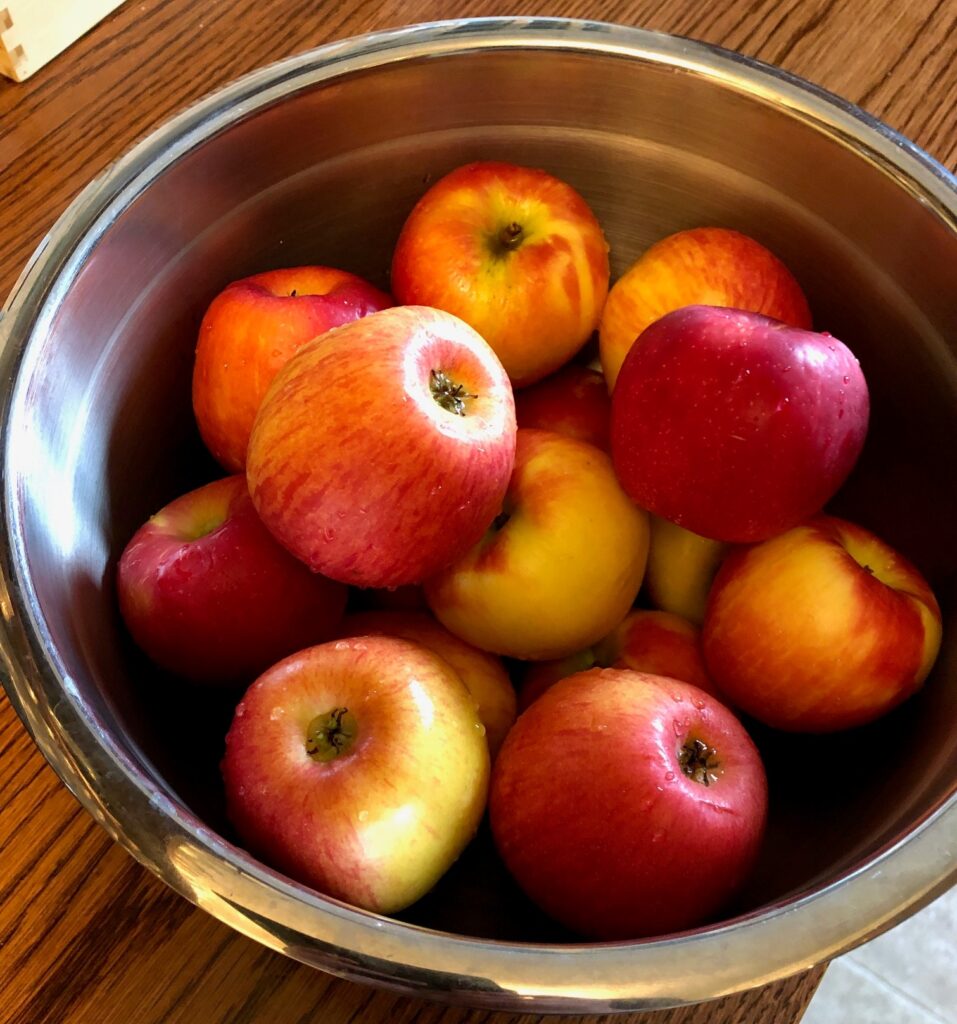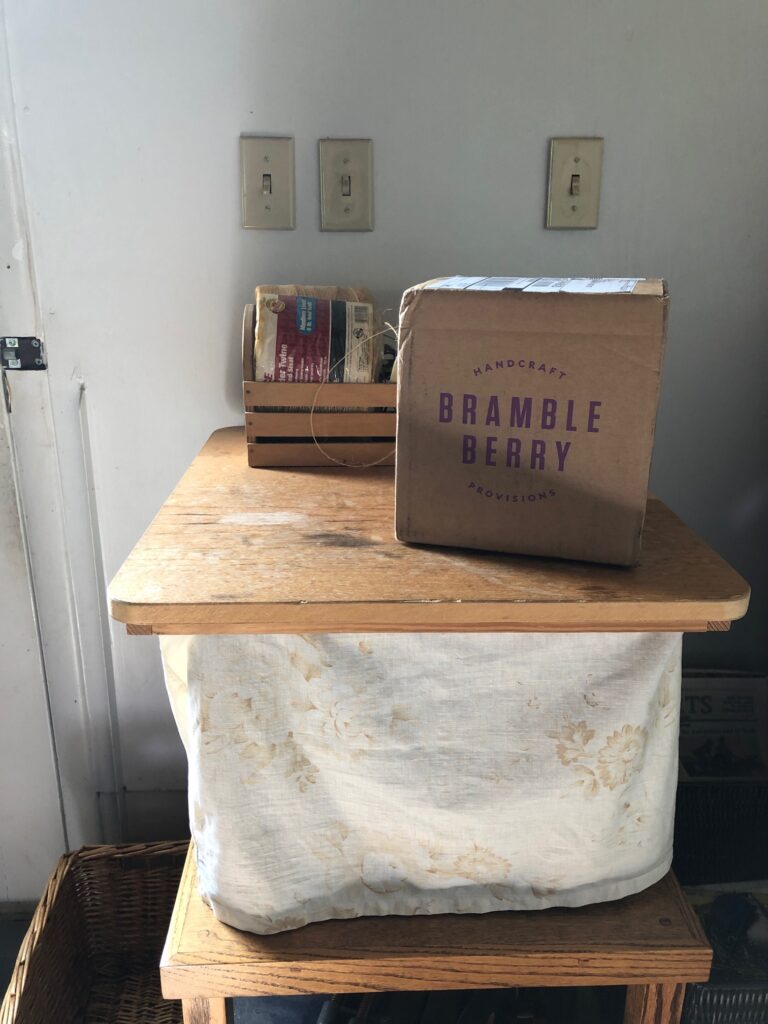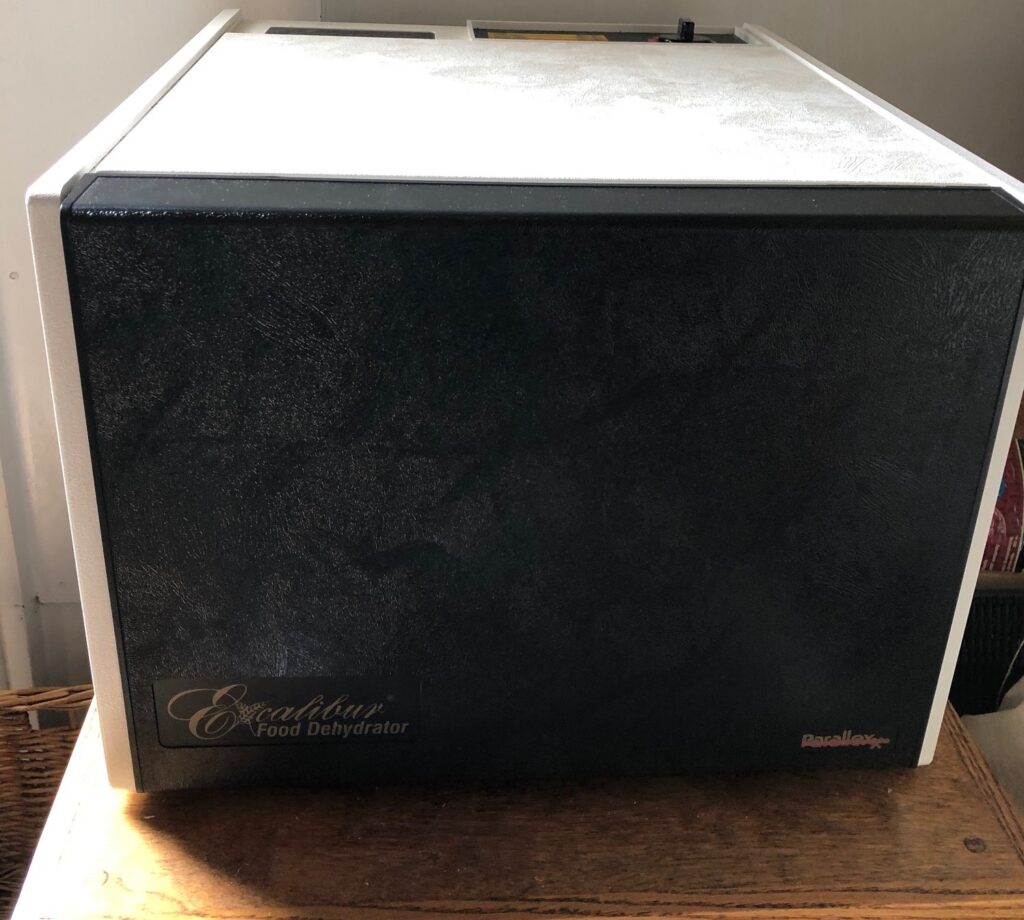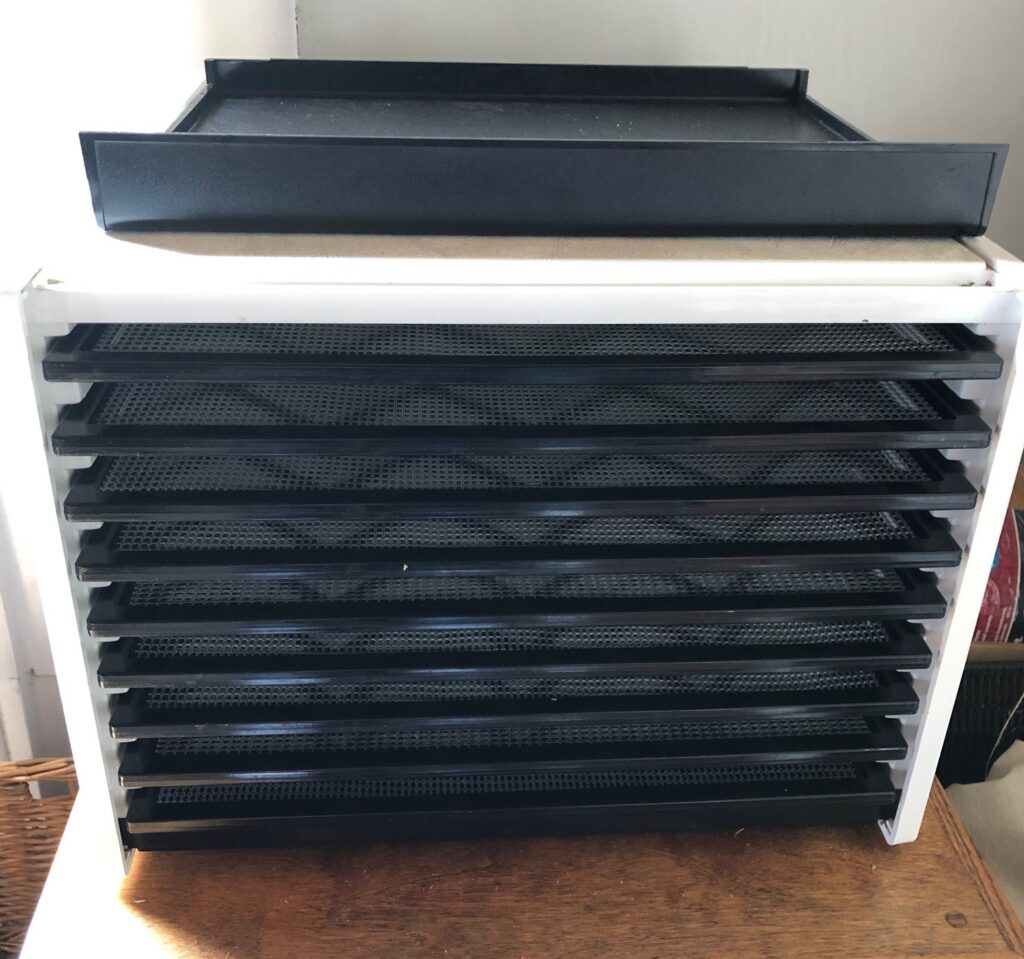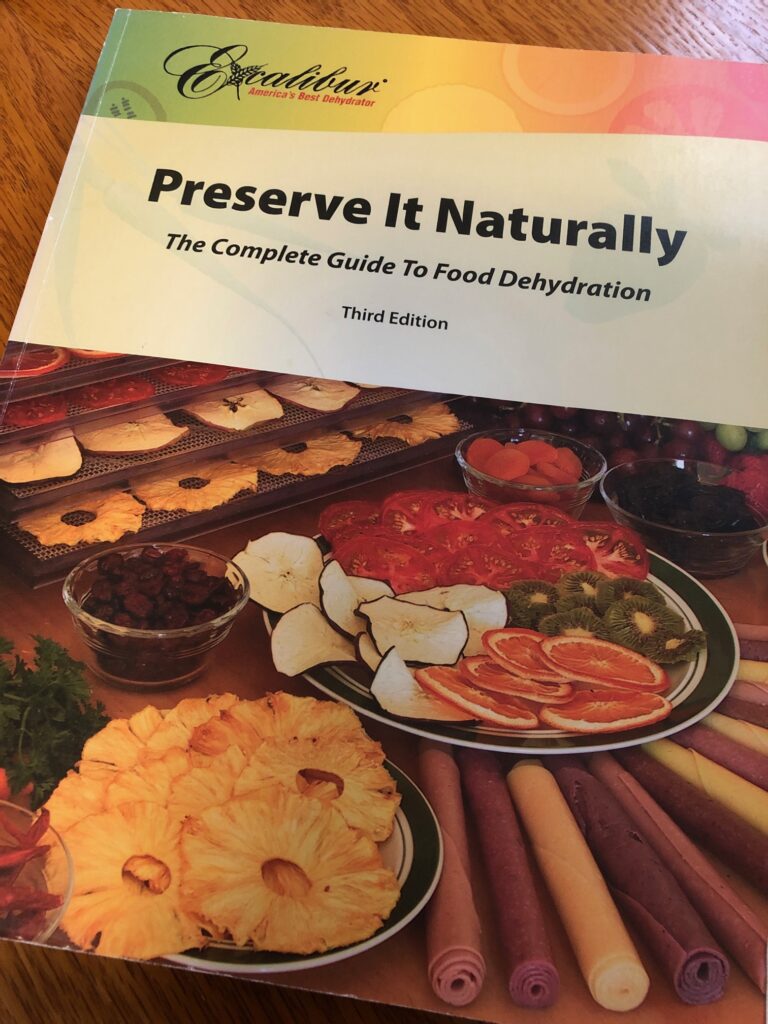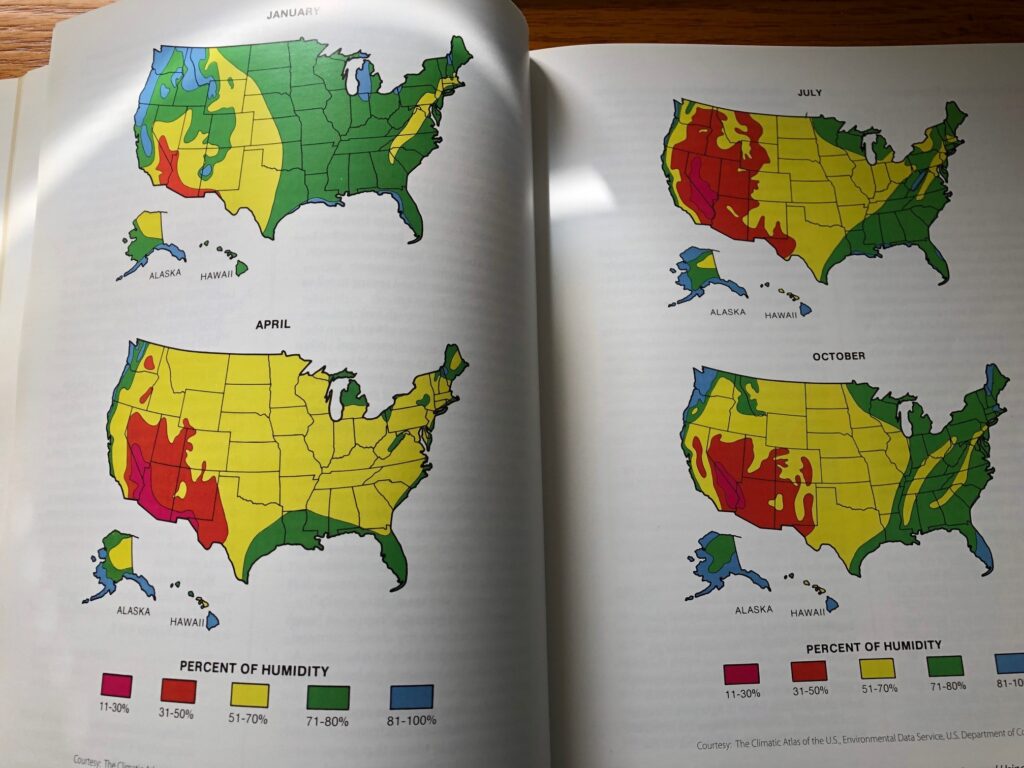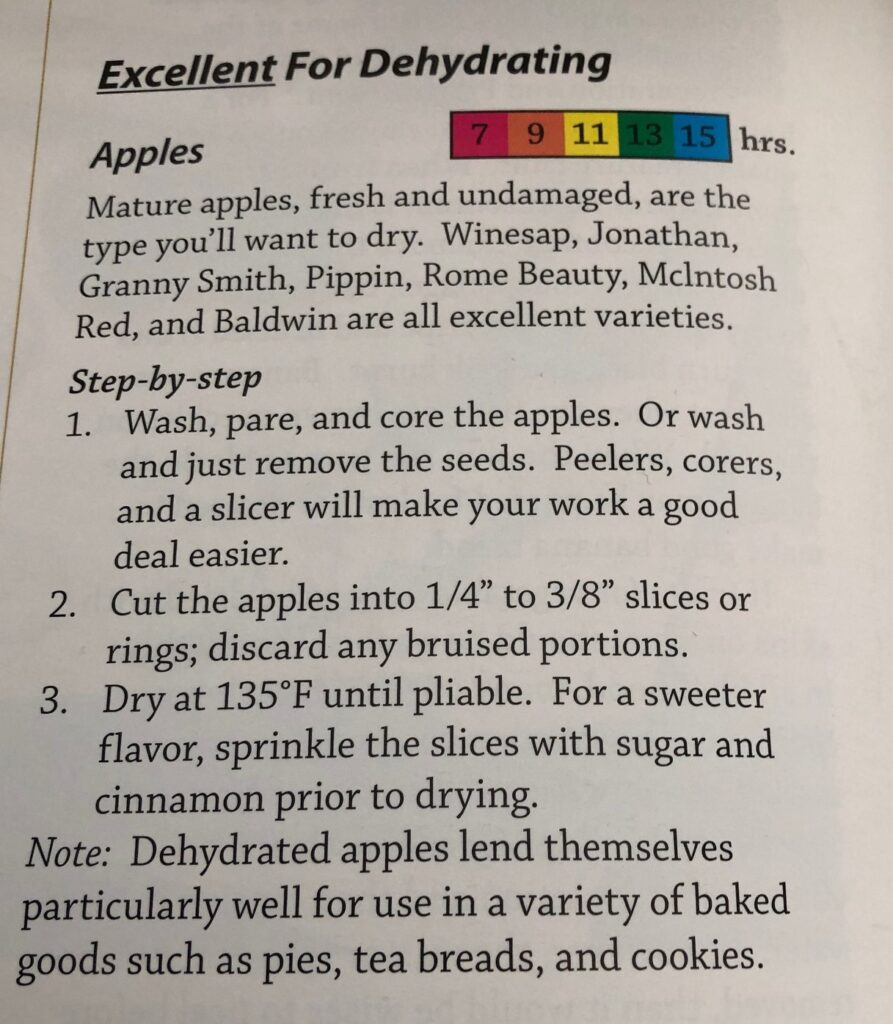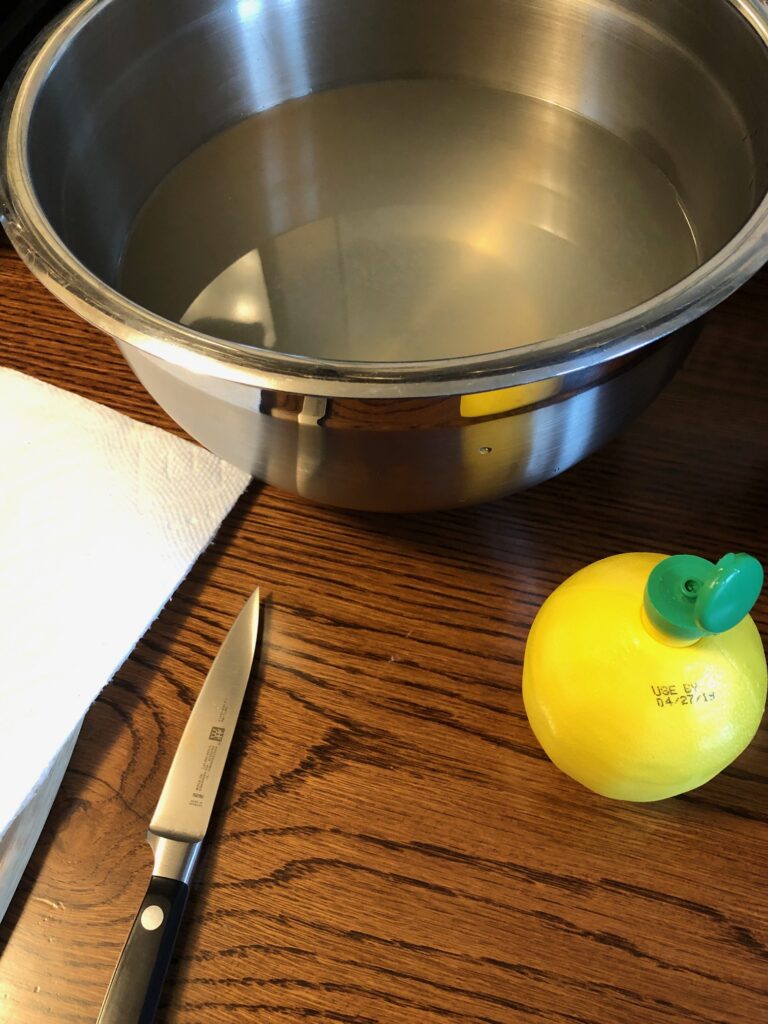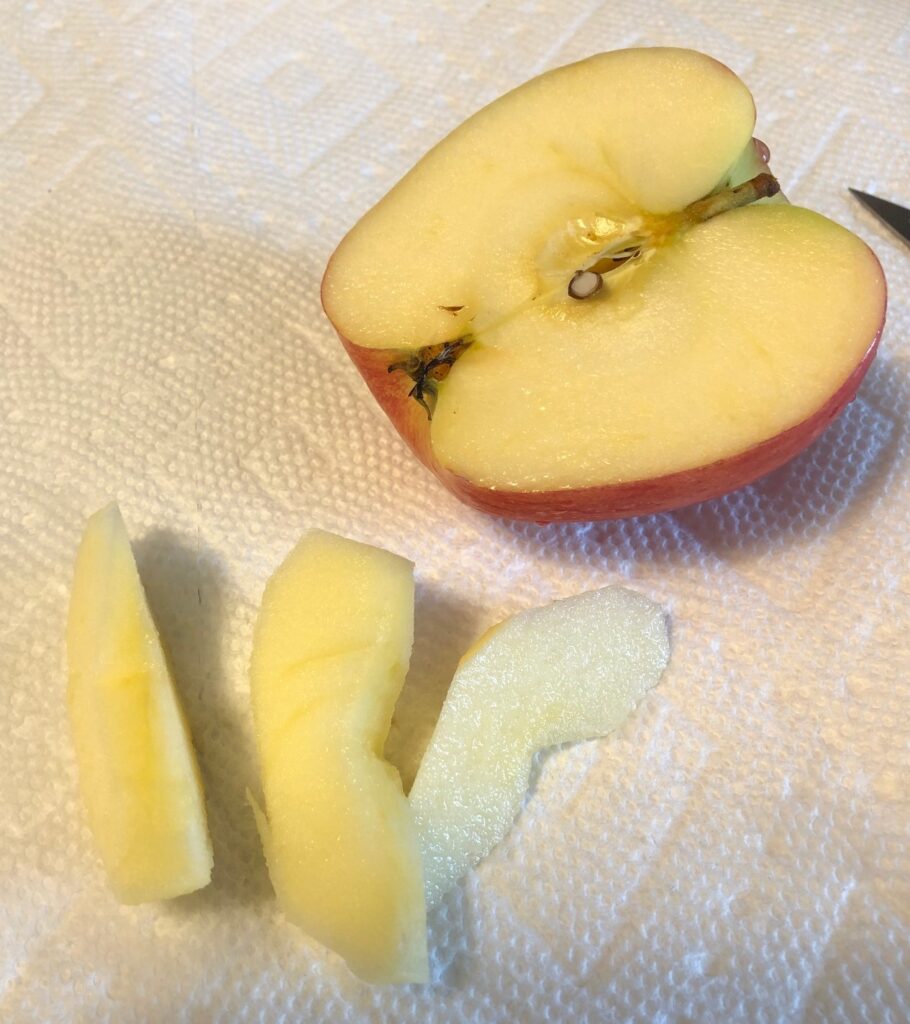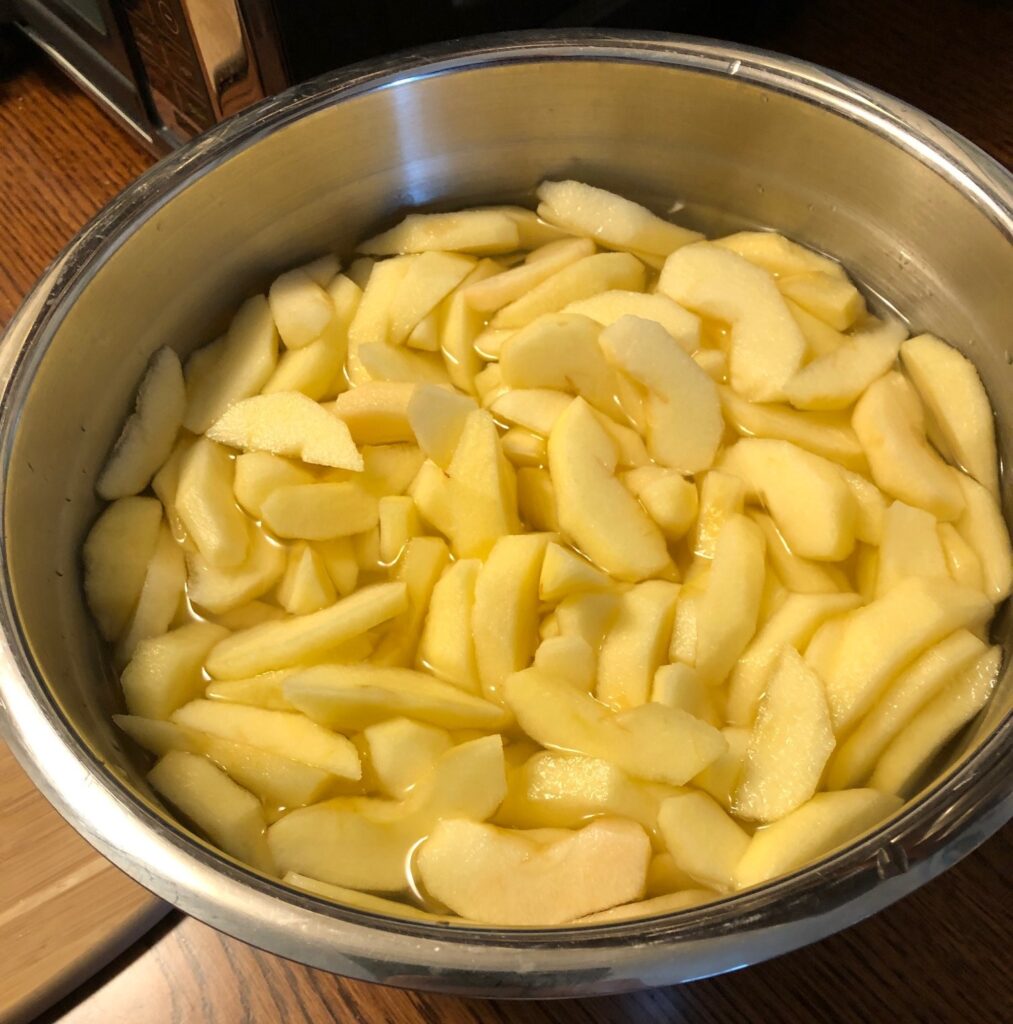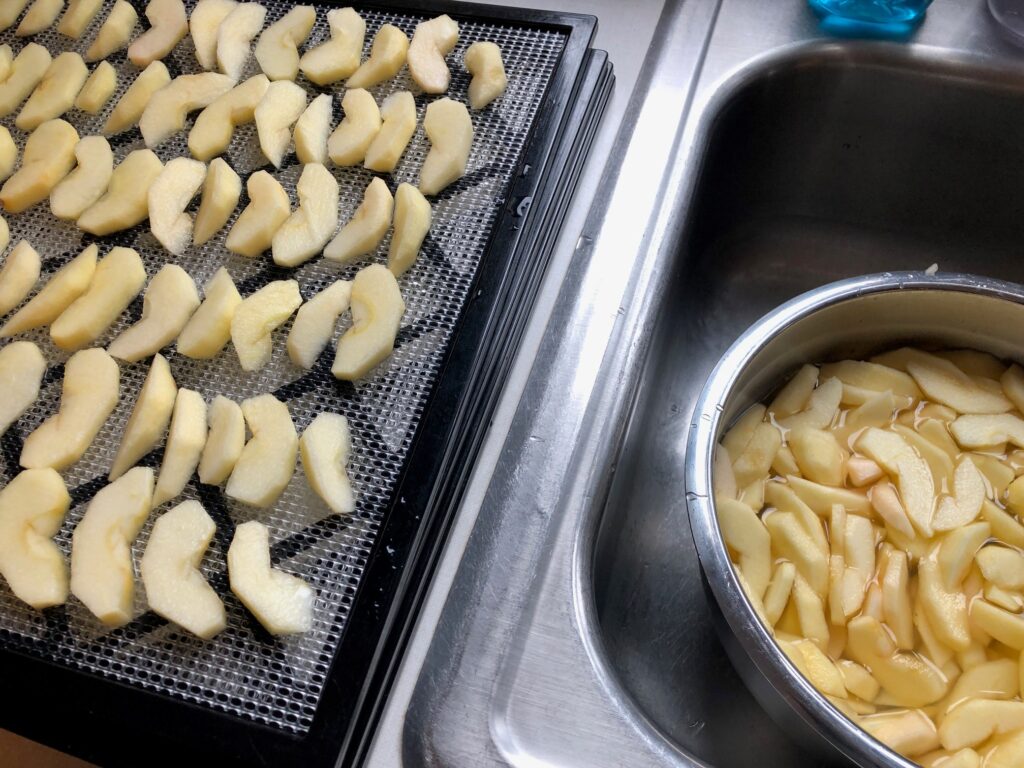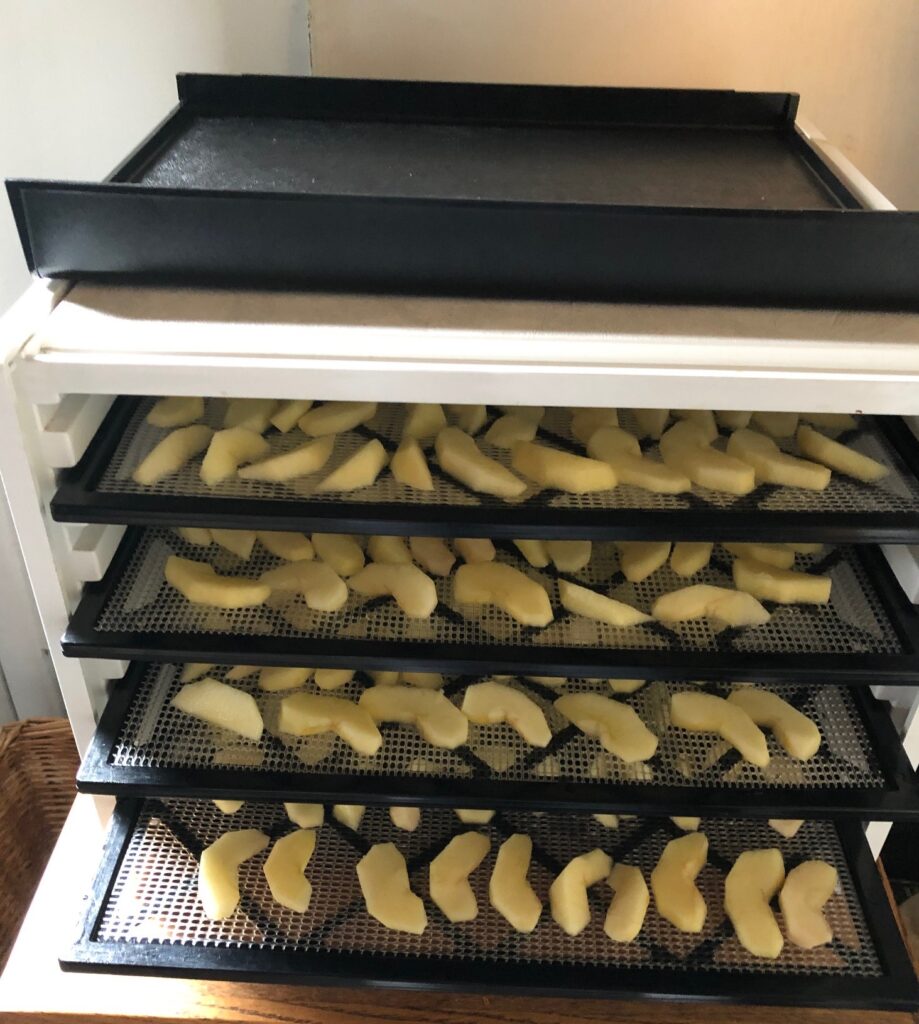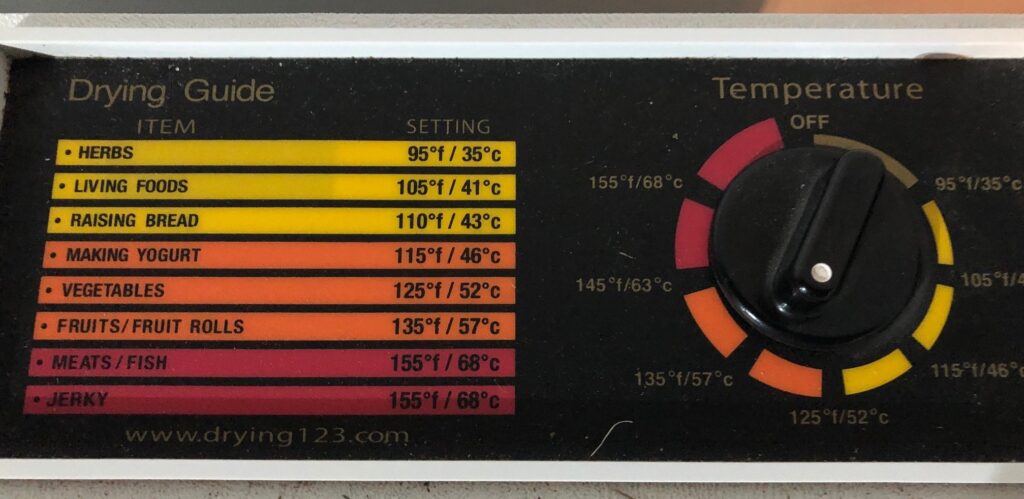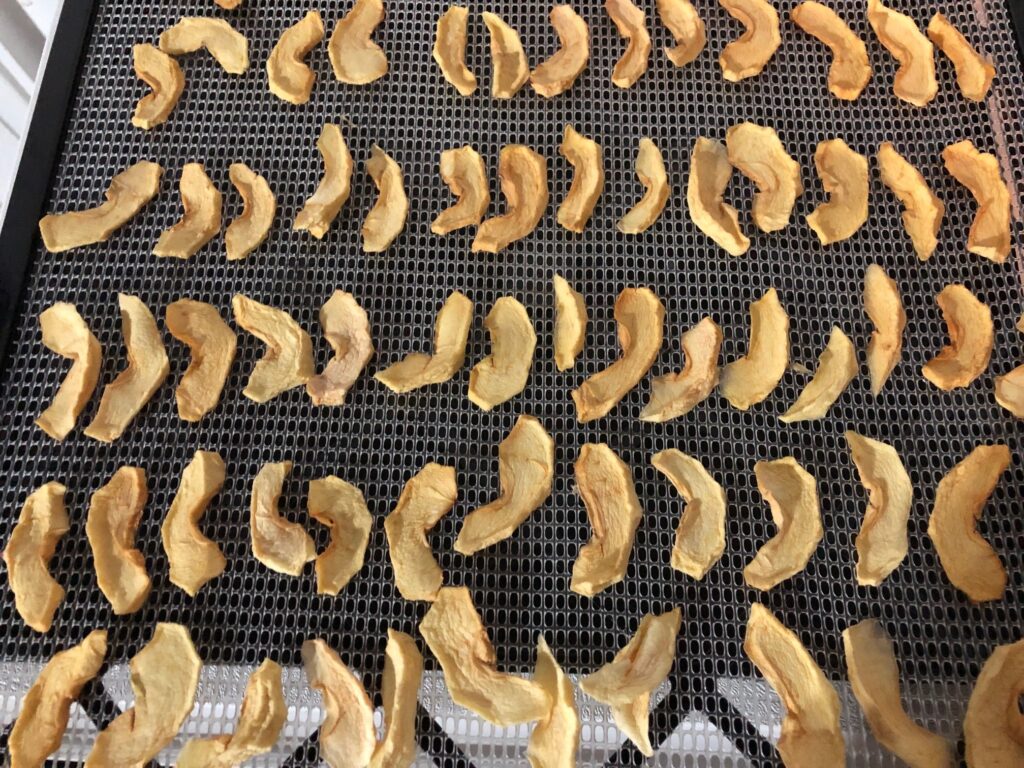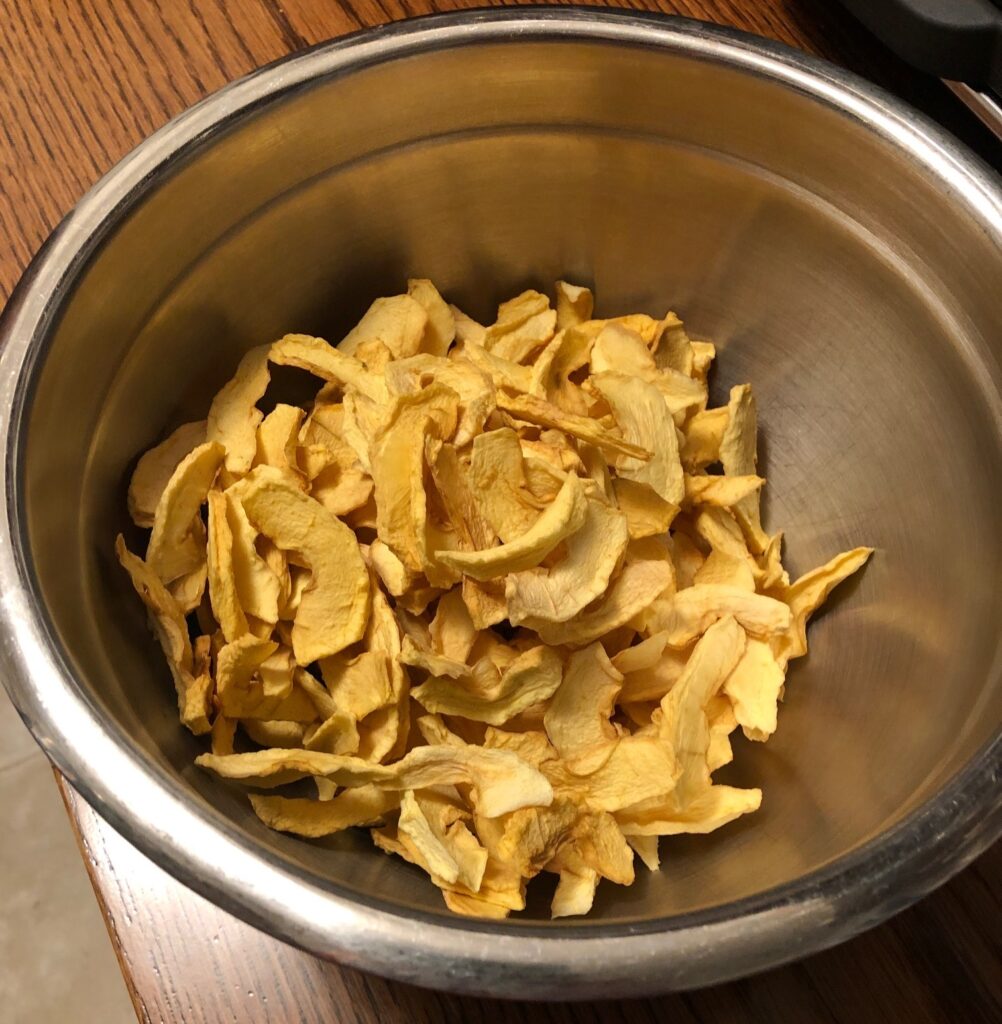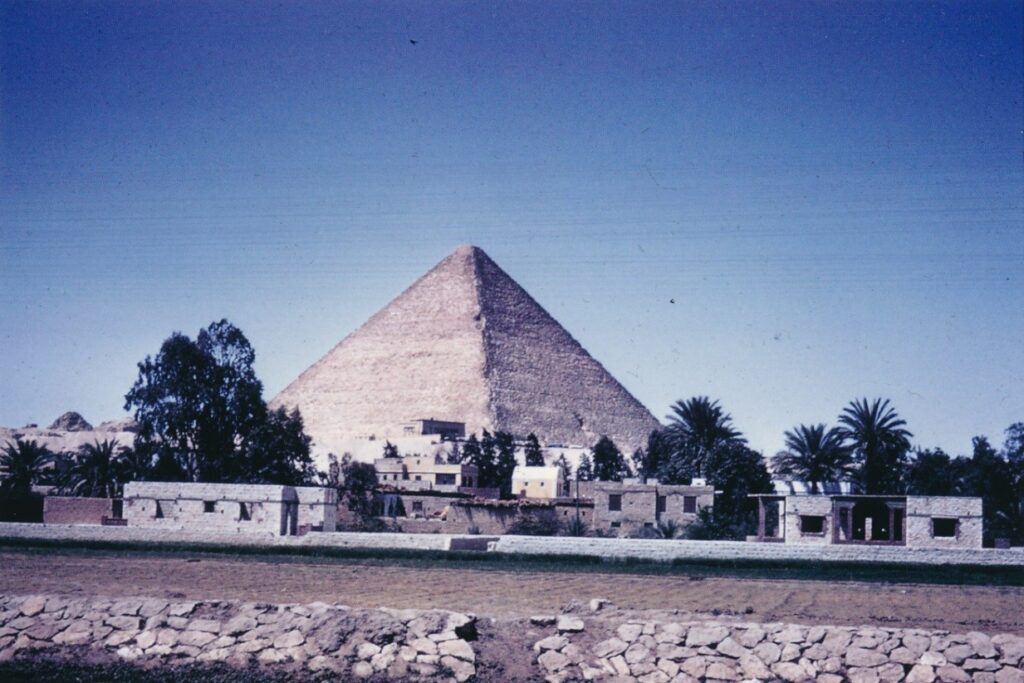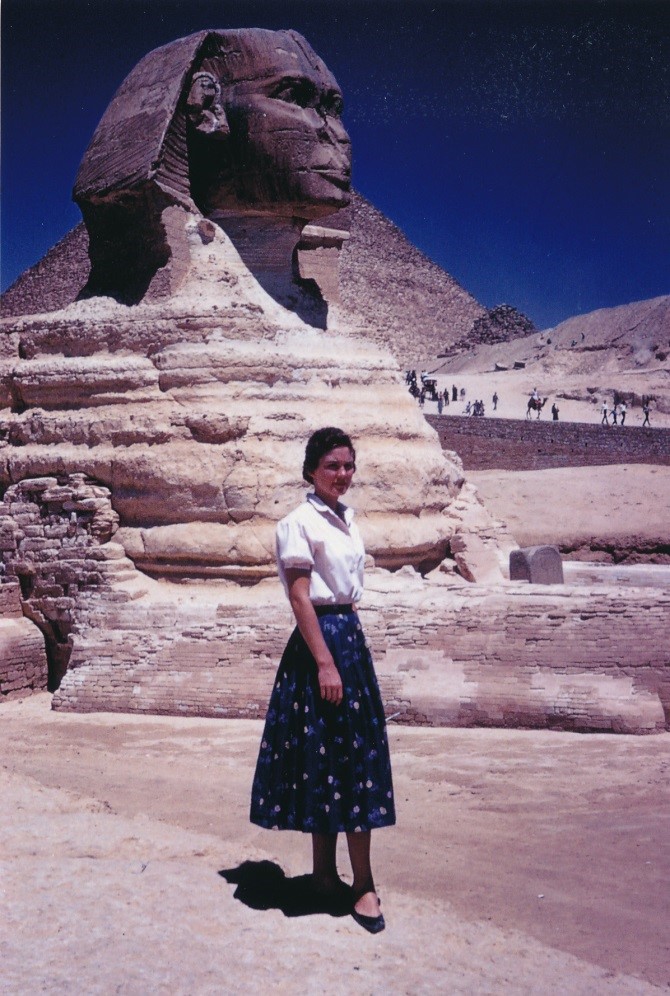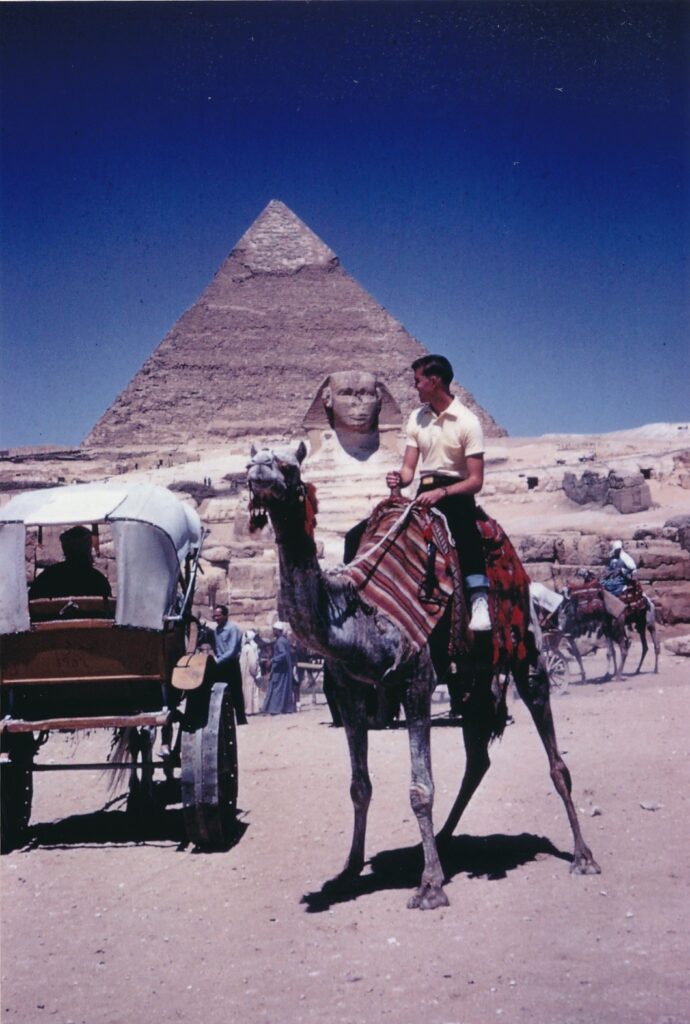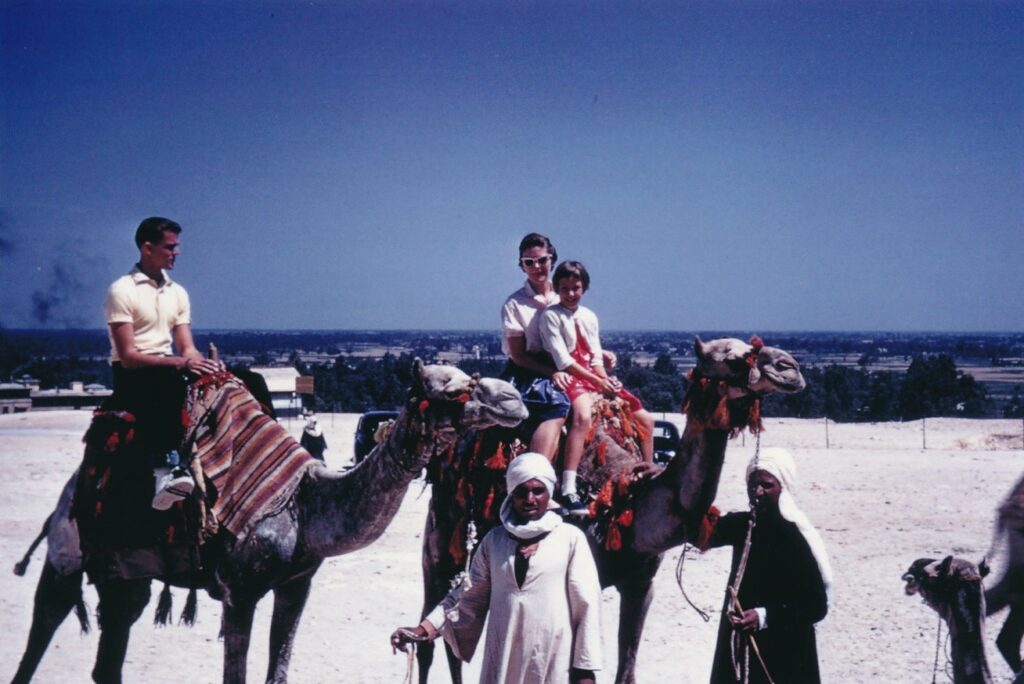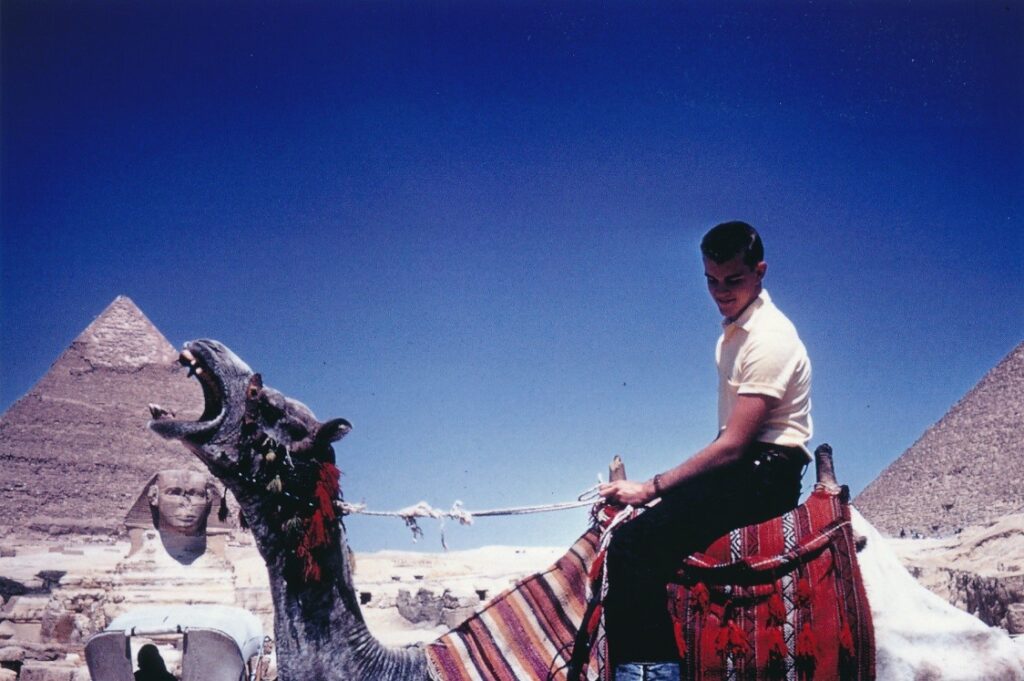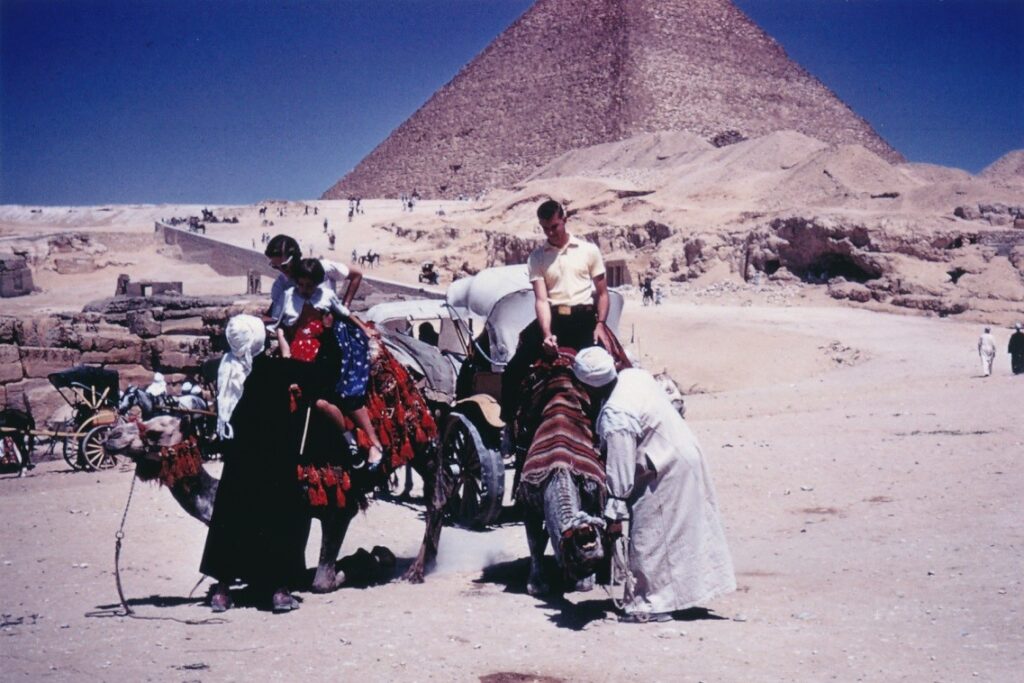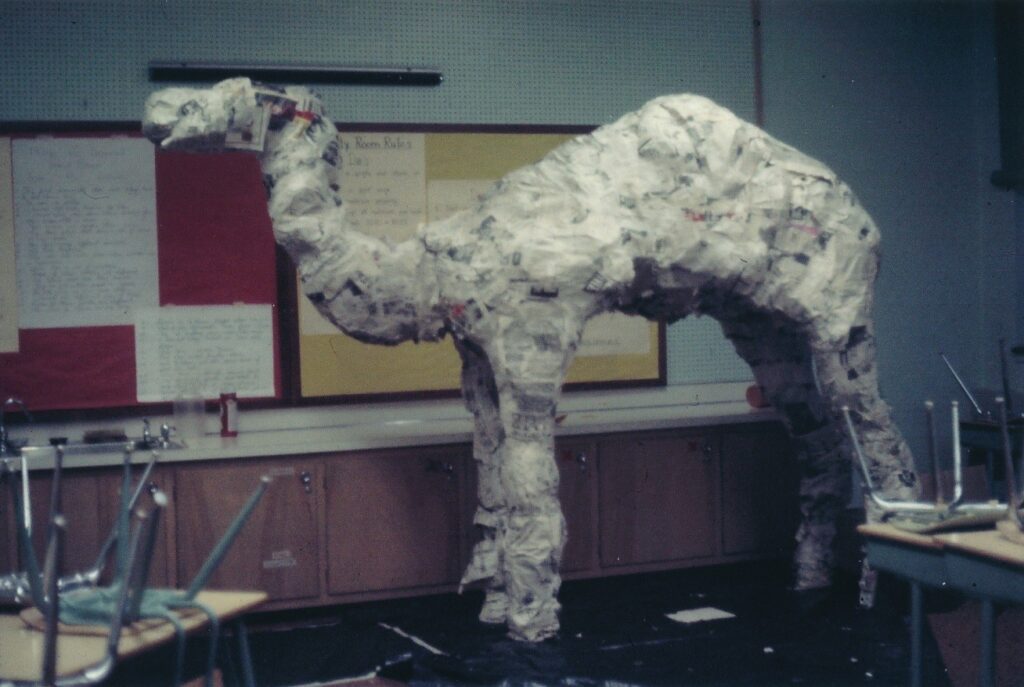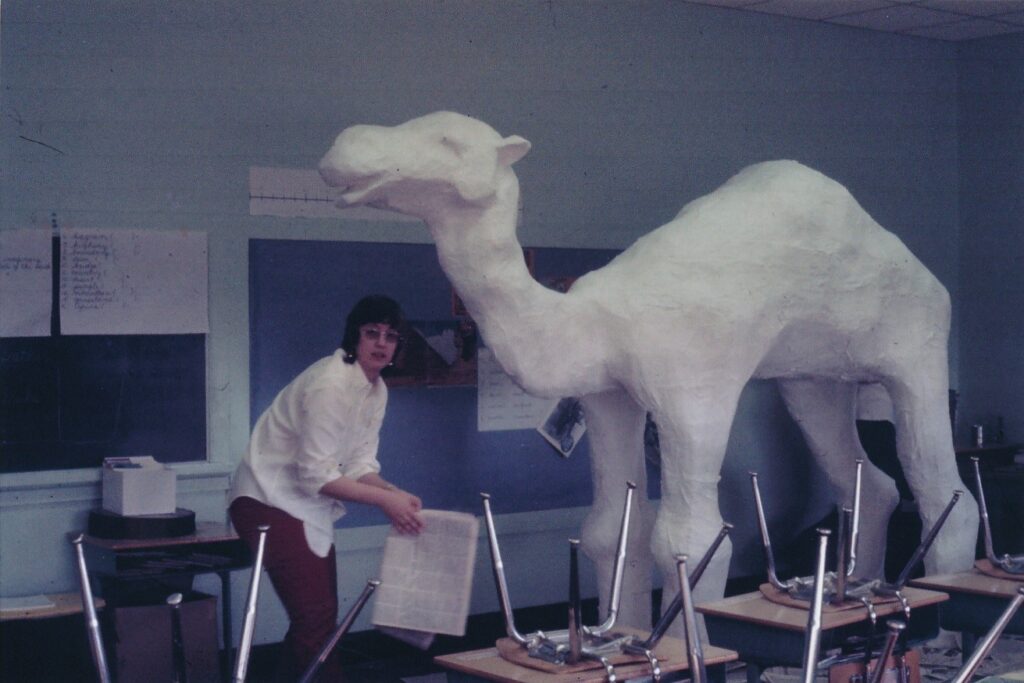We’ve had over 1/2 inch of rain since we set up the rain barrels on April 27, 2021. That’s 10 days! The rain barrels were probably full after the first rainfall, but today was the day Bert got around to pump them up to the holding tank in the garden. I tried to document all the details of the equipment he used, but hopefully you’ll get the gist of the process.
First, Bert put one end of a long garden hose into the holding tank in the garden. Then he ran the hose down the hill to the little pump sitting behind the shop. He says it’s about 100 feet.
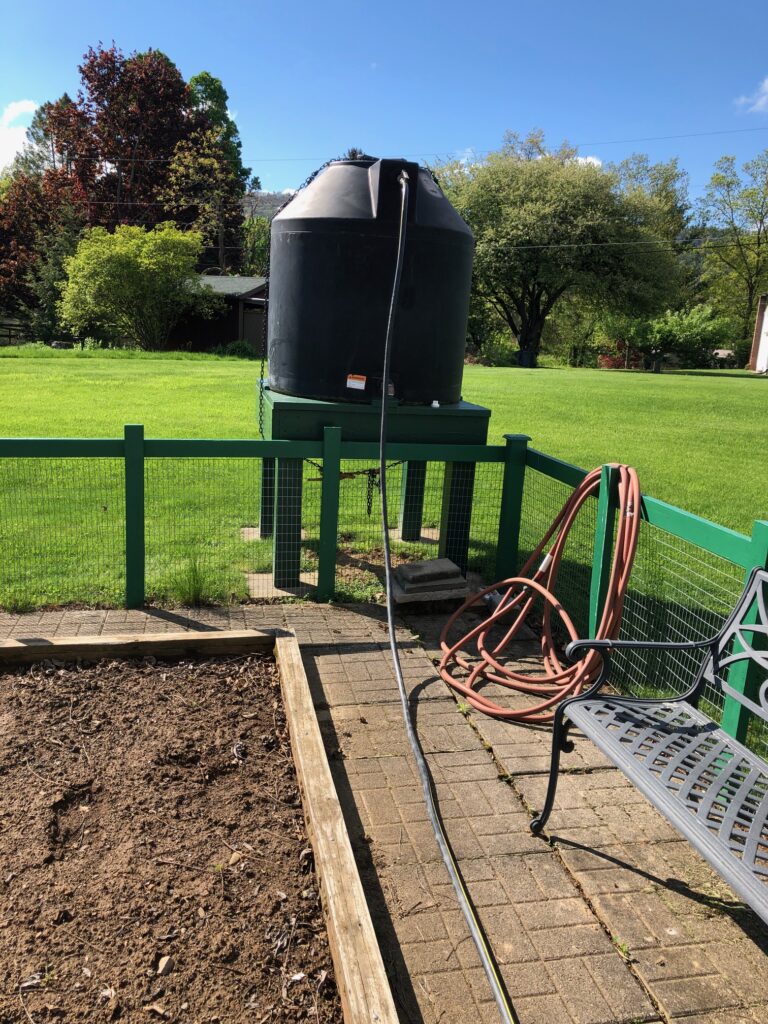
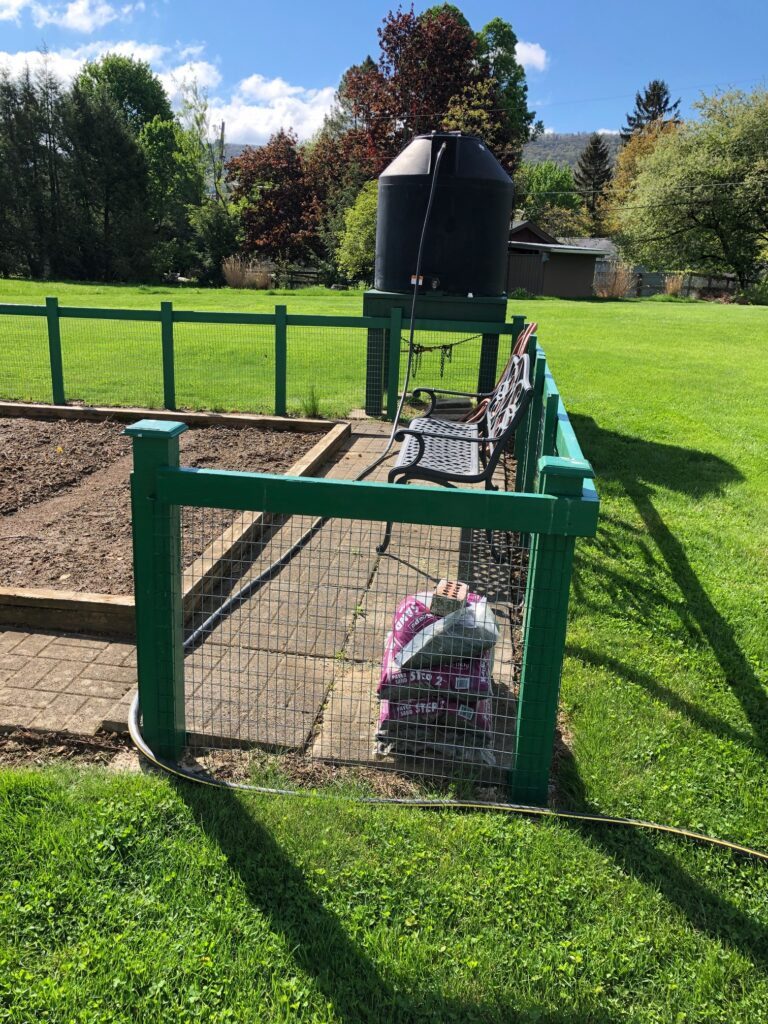
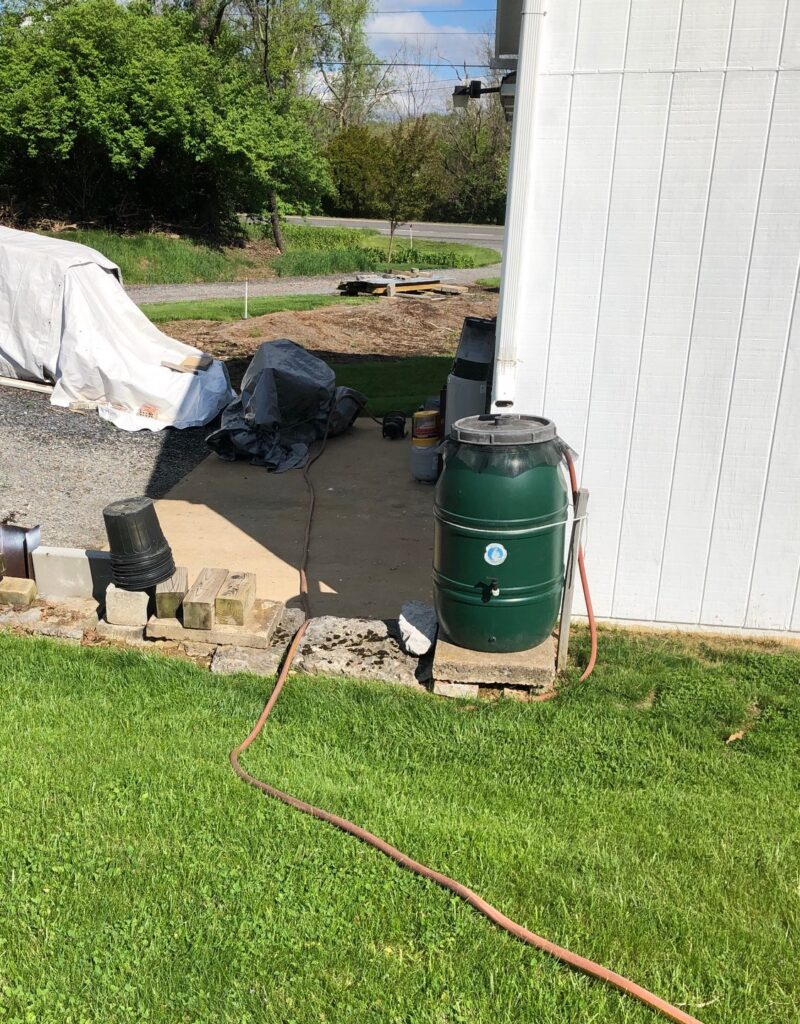
This is the first barrel he will pump. He removed the lid and screen. You can see how much pollen and junk the screen collected. The red hose on the side handles the overflow if the barrel is full
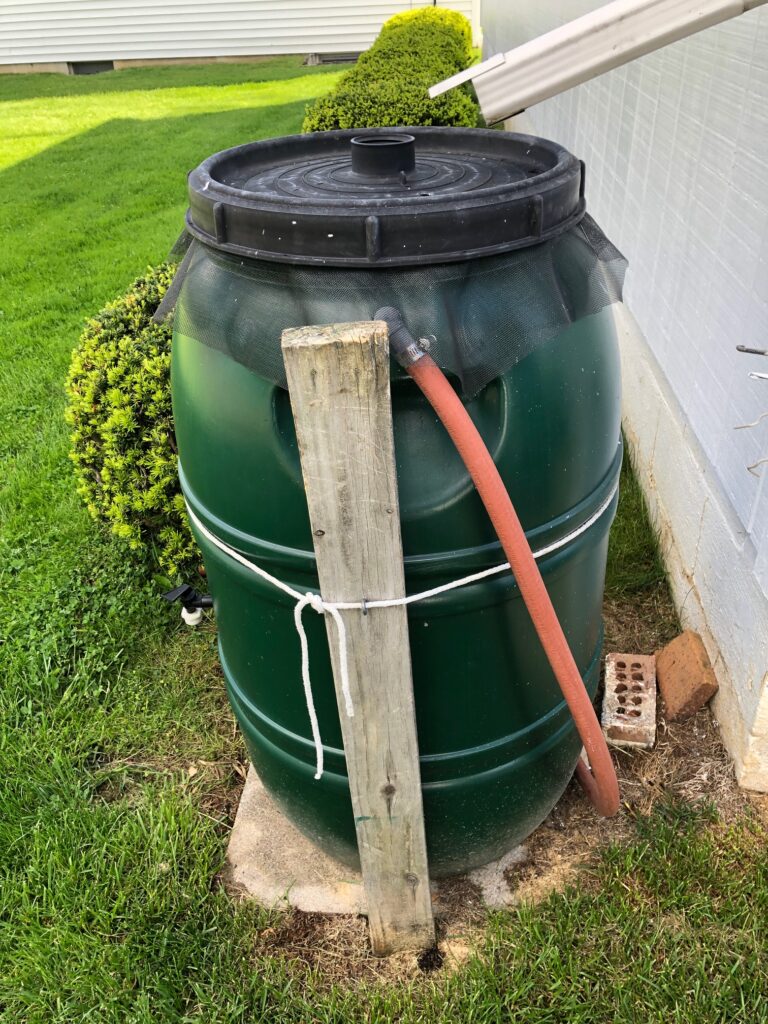
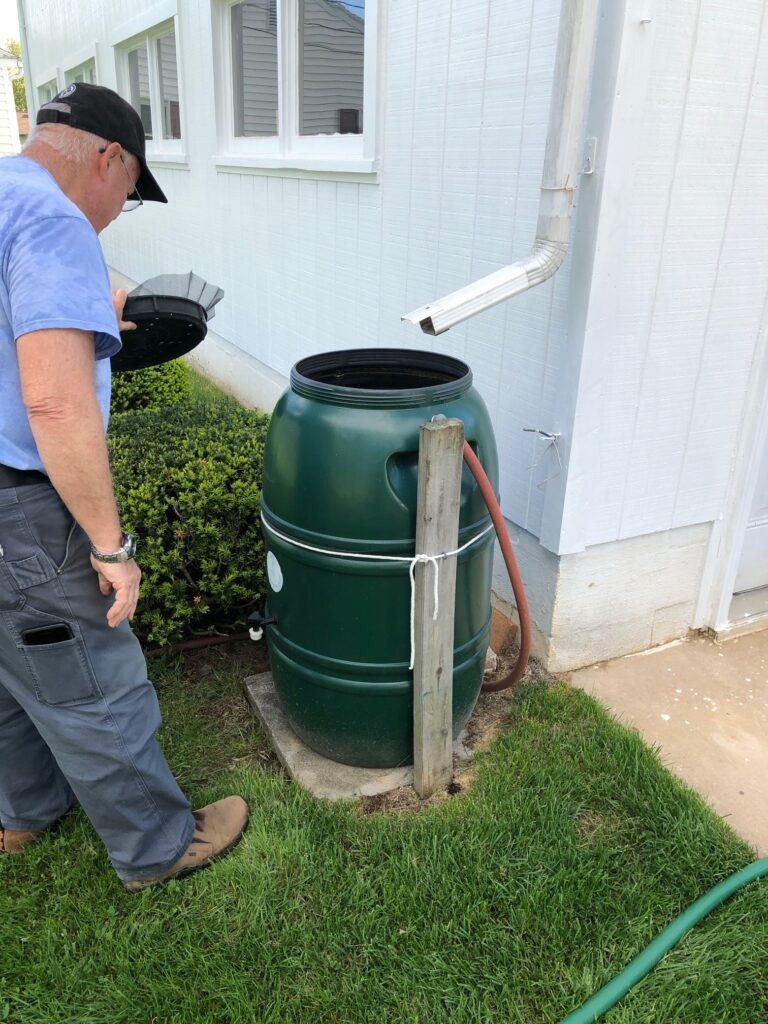
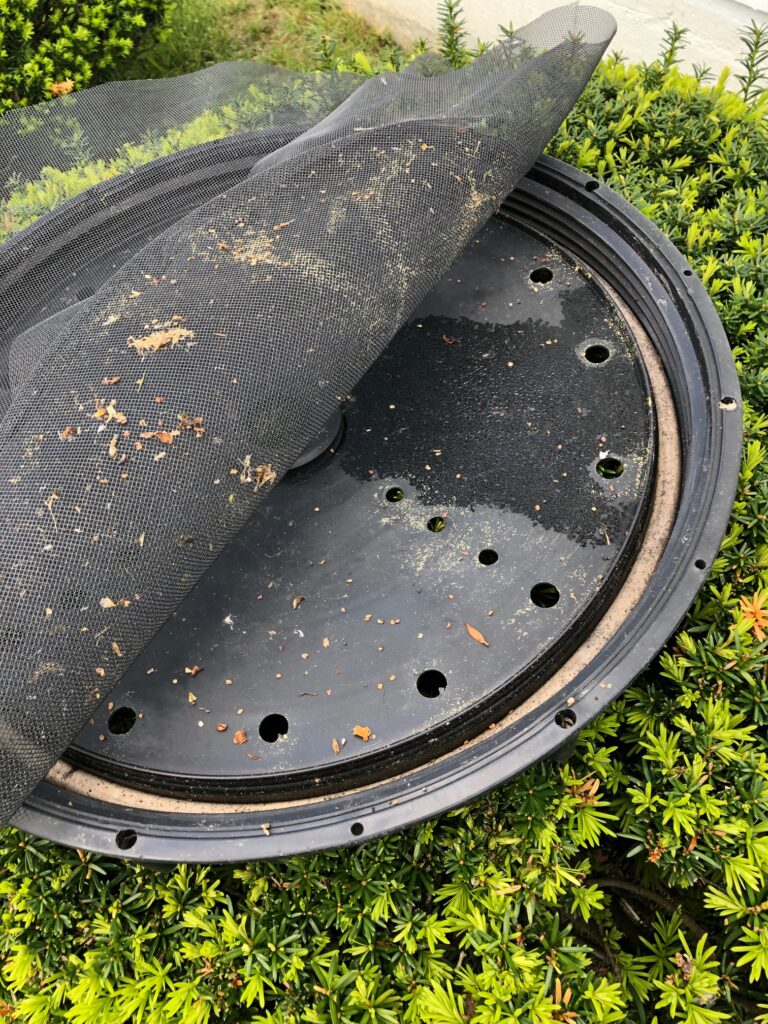
And the barrel is definitely full!
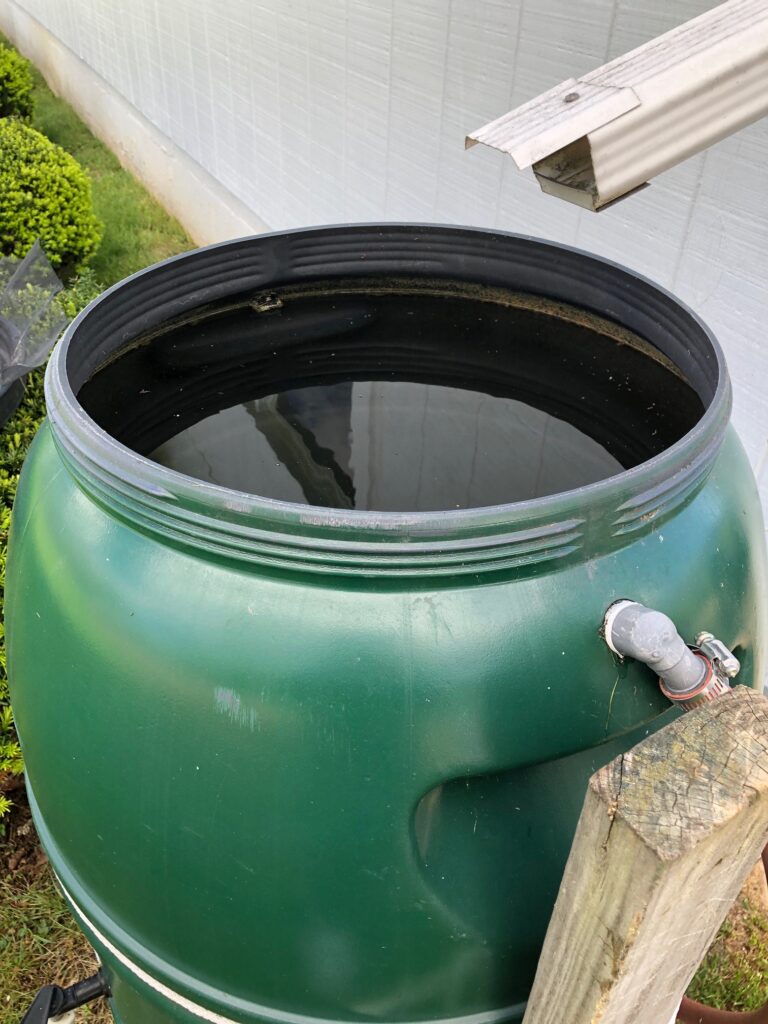
The first batch of water to go up to the holding tank gets about a cup of Clorox added to keep bacteria from growing in the tank.
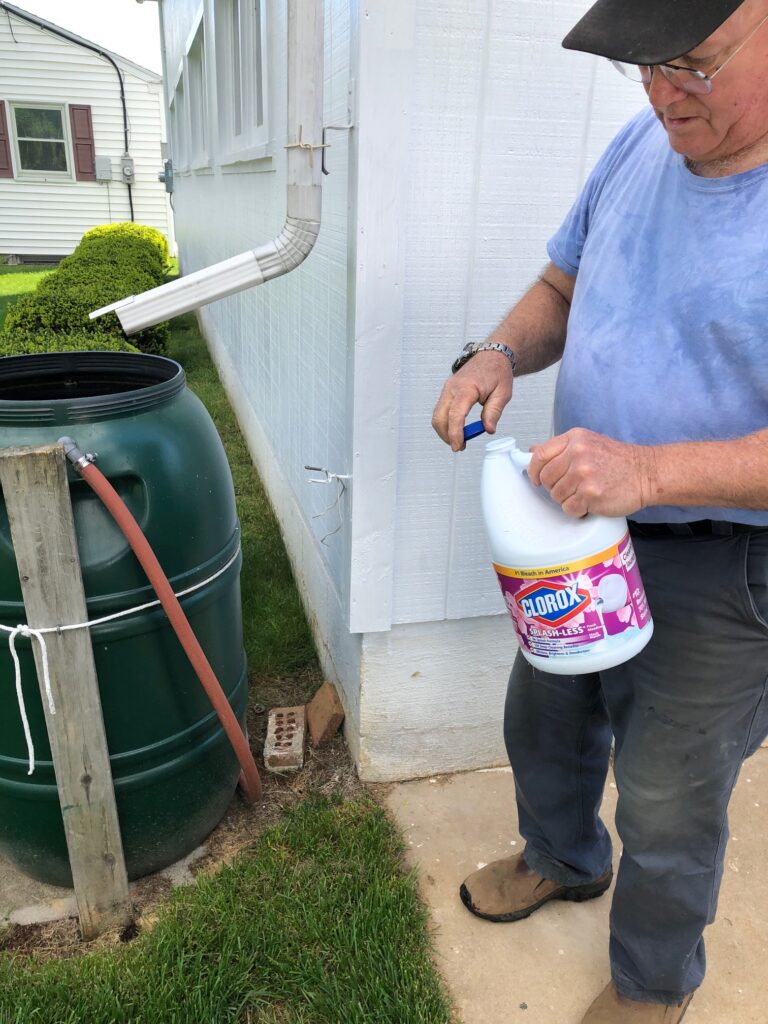
This is the motor he uses. It’s a 1 HP Portable Lawn Pump. It pumps the water about 100 feet uphill at 70 psi.
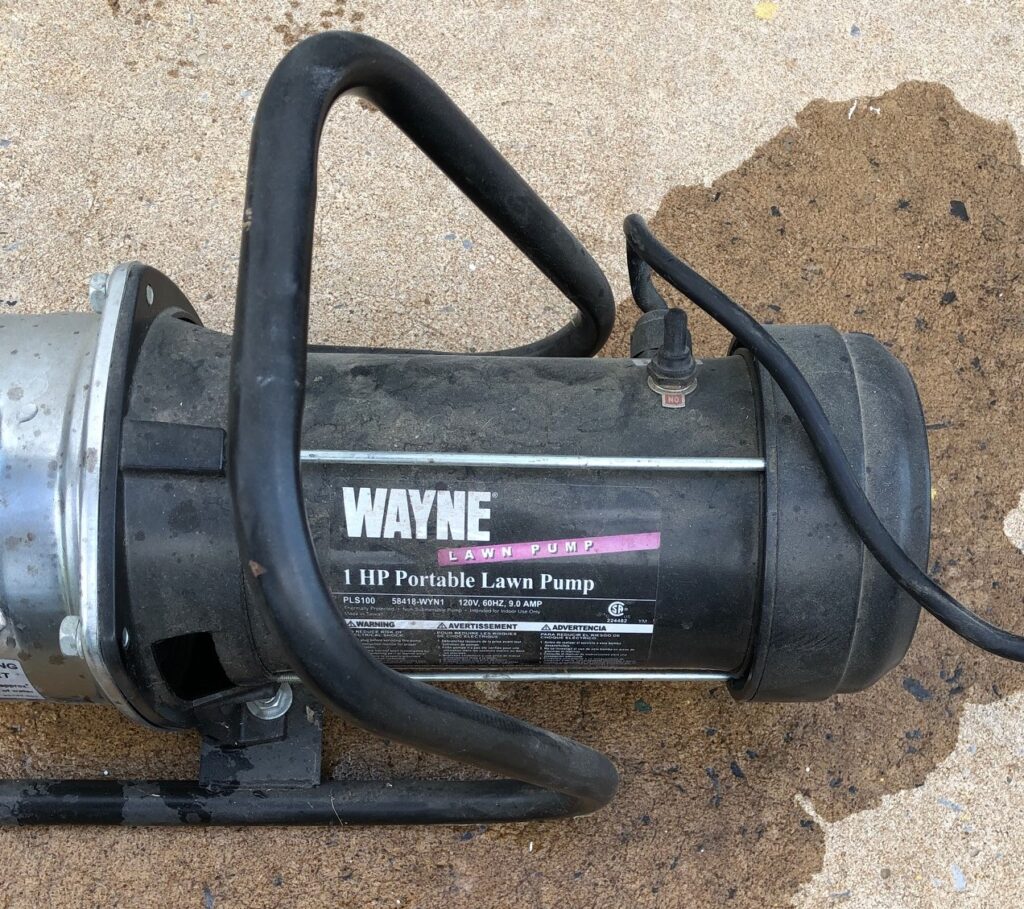
Here are the various hoses and cords ready to assemble.
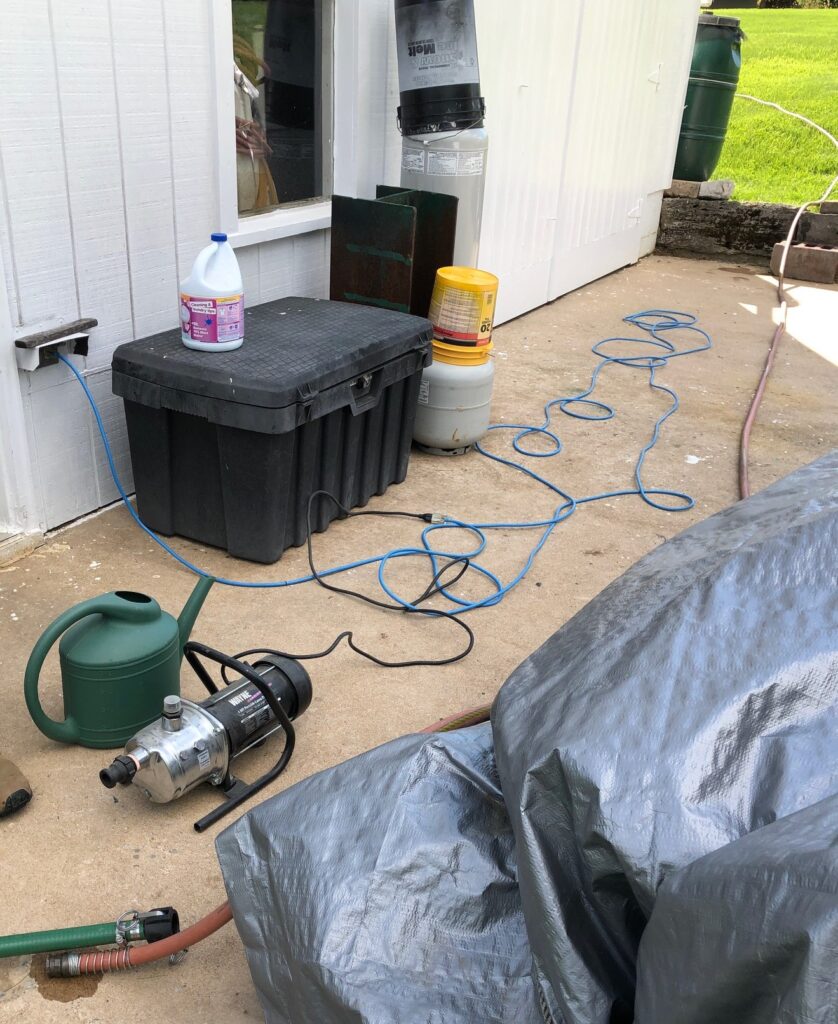
The garden hose (red) is in the foreground. Bert is holding a siphon hose. It is larger around than the garden hose and has a quick-attach adapter.

This is the other end of the siphon hose…called a foot valve.
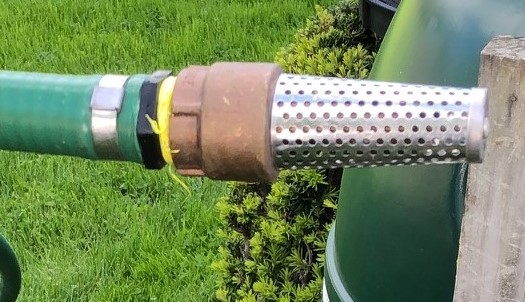
He fills up the siphon hose with water.
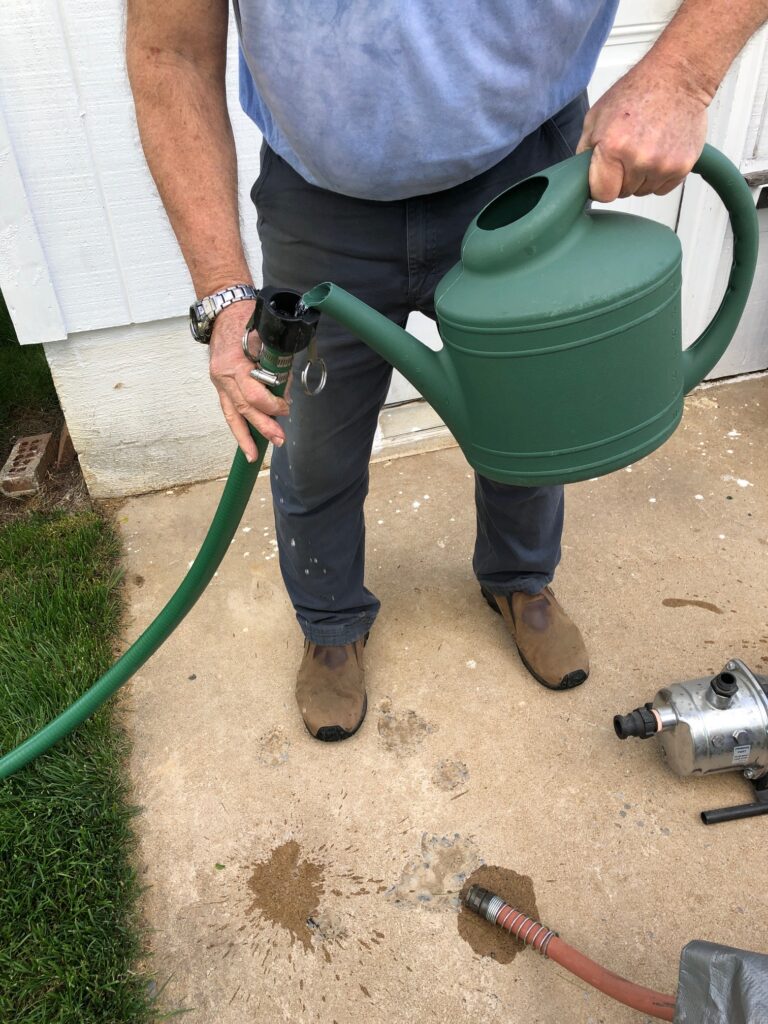
Once the hose is full, he quickly attaches it to the motor. He also adds water to the connector on top of the pump which primes the pump housing.
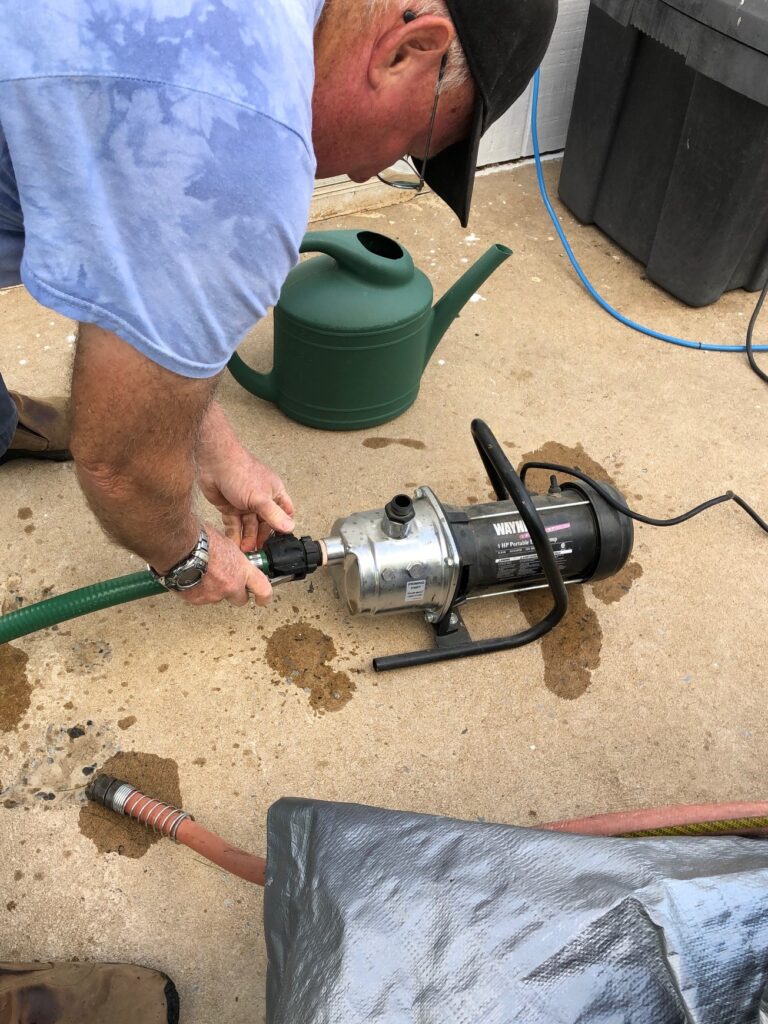
Hard to see in this picture, but then he loosens the bleeder valve to release any air in the pump.
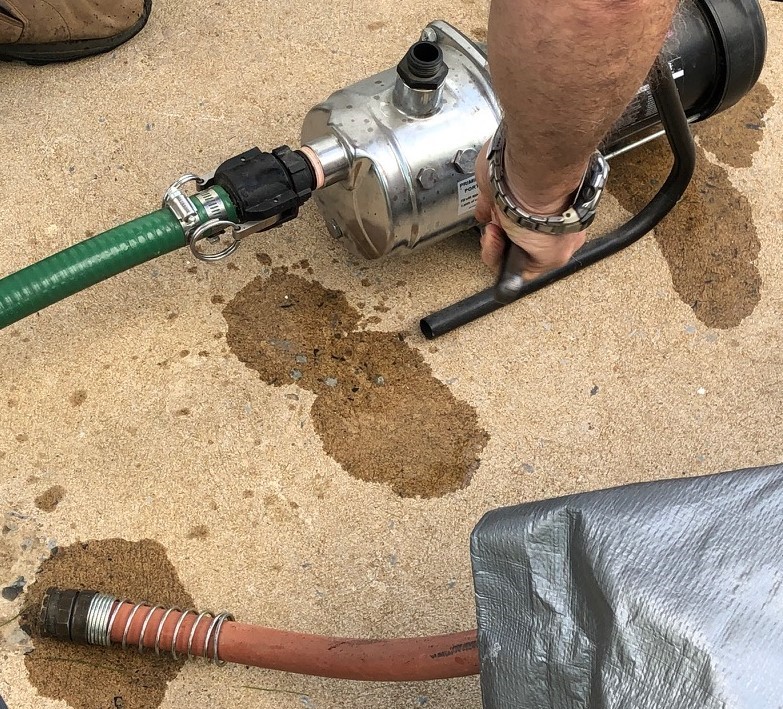
Next, he attaches the garden hose to the motor and tightens it. He also tightens the bleeder valve.
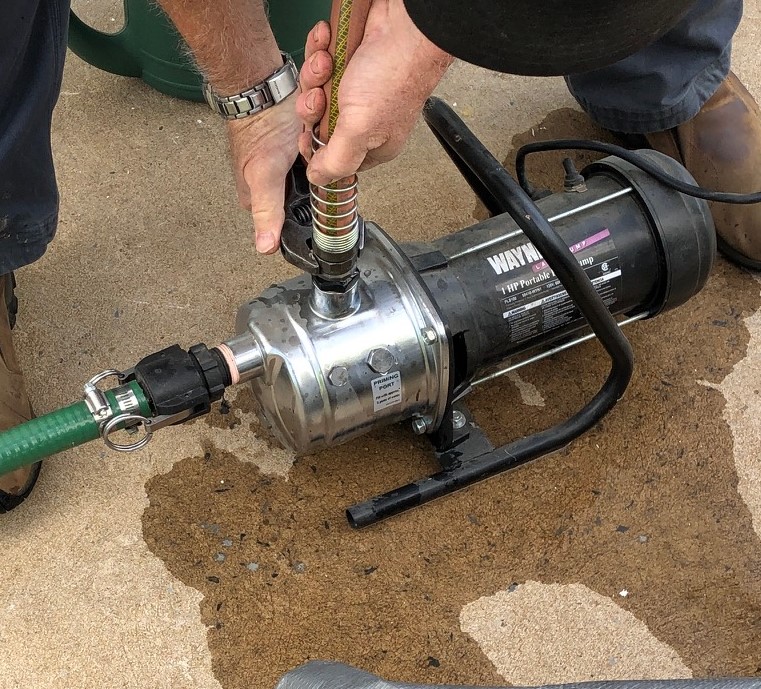
The other end of the siphon hose goes into the barrel. He tucks the hose between the barrel and the supporting wooden stake so it doesn’t come out while it’s working.
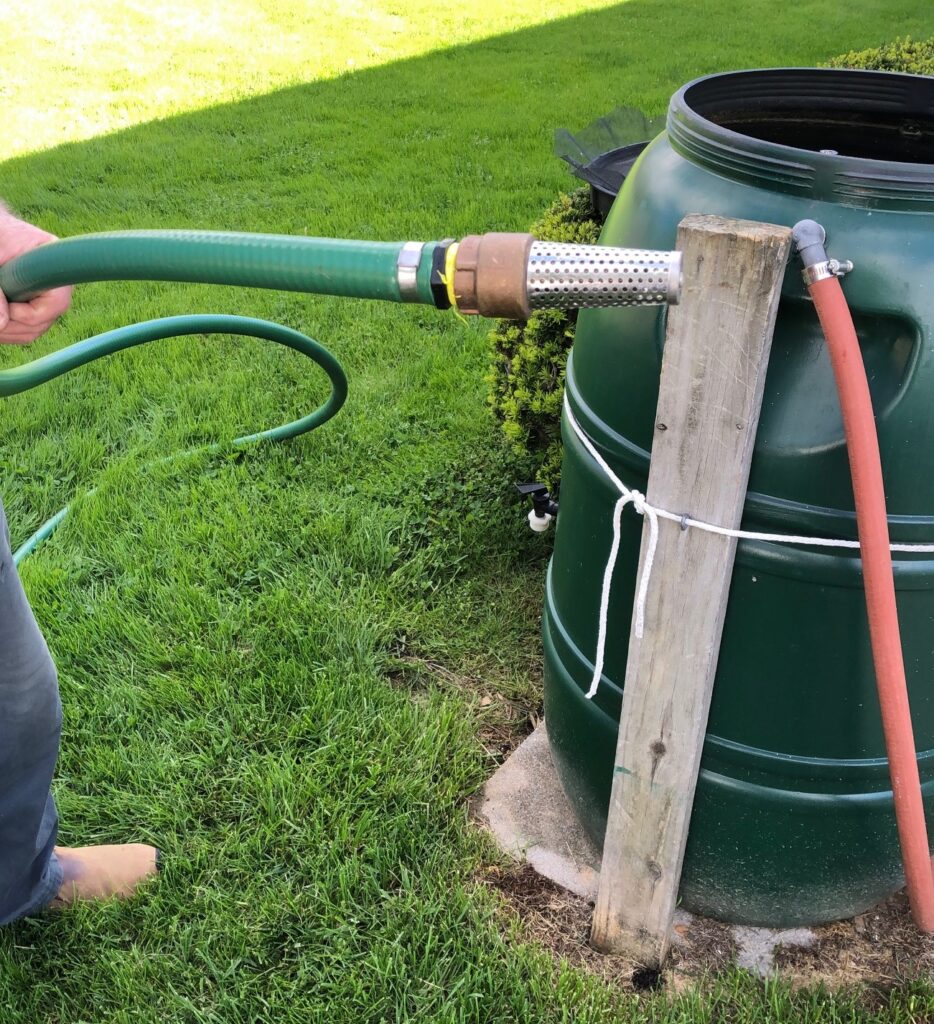

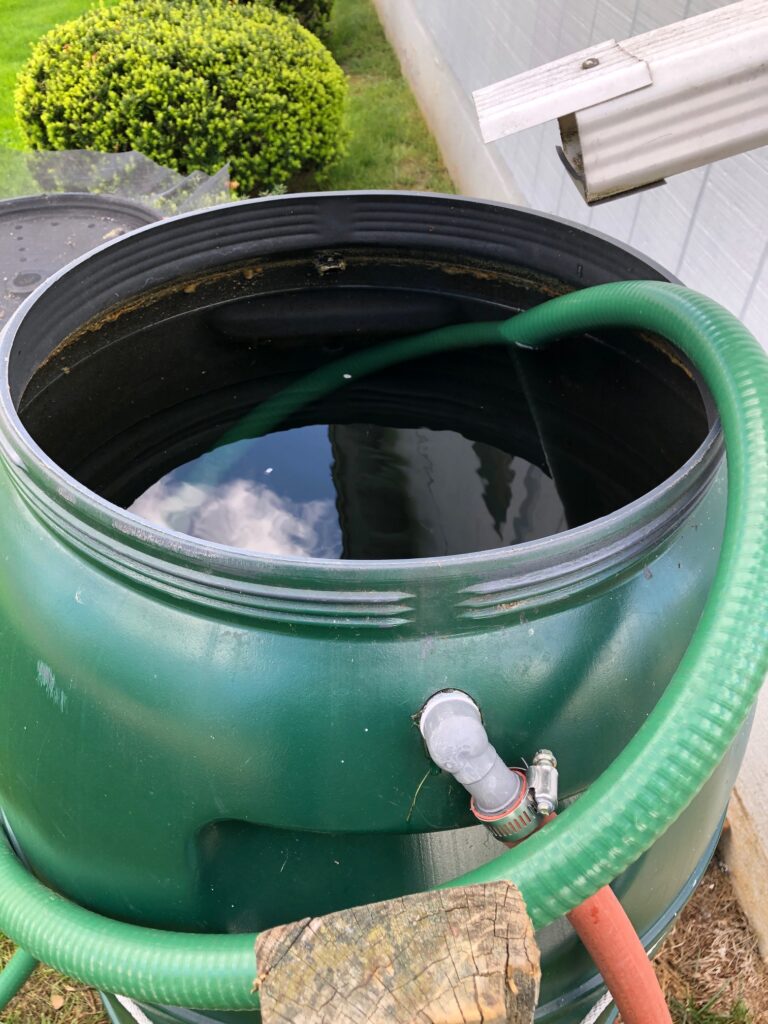
And then, he turns the motor on!

In 8 minutes or so, the barrel is almost empty. He quickly turns off the motor so it doesn’t suck air.
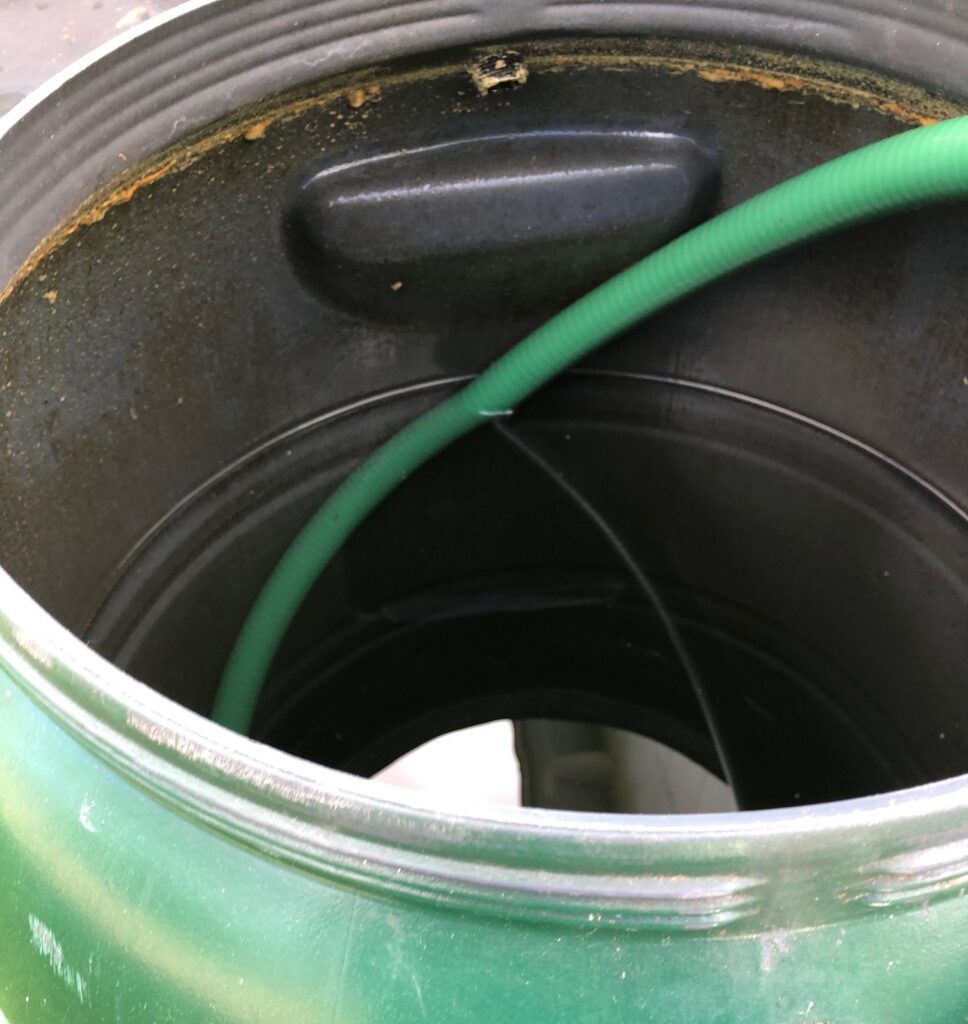
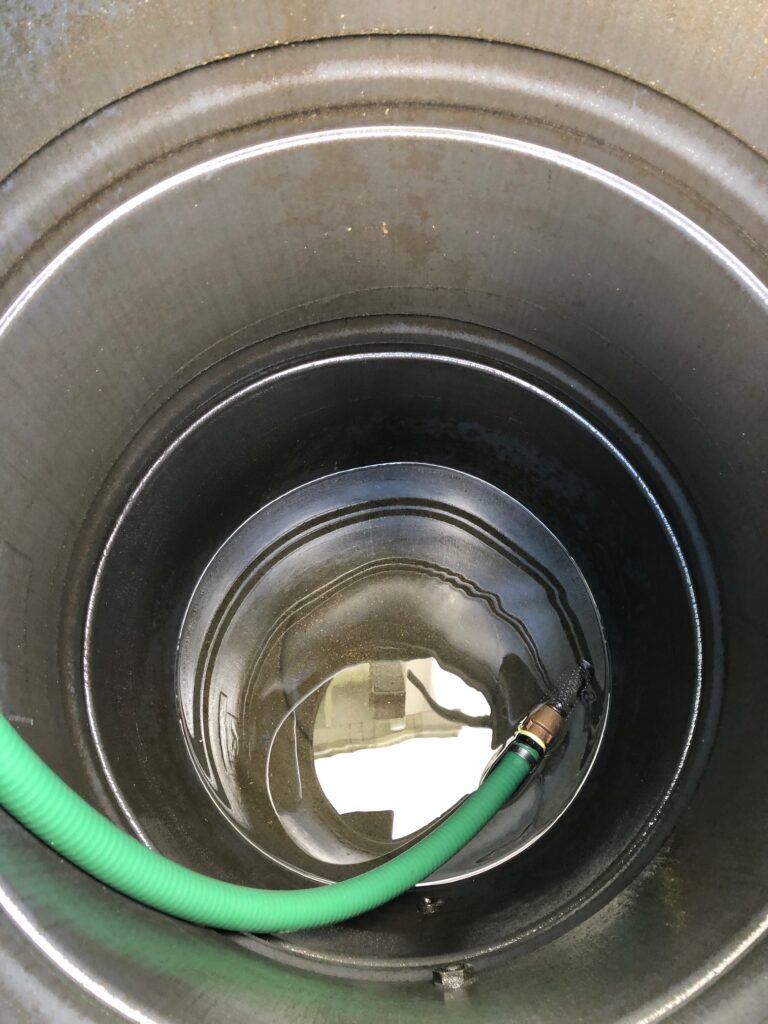
The lid and screen goes back on the barrel and it’s ready for more rain!
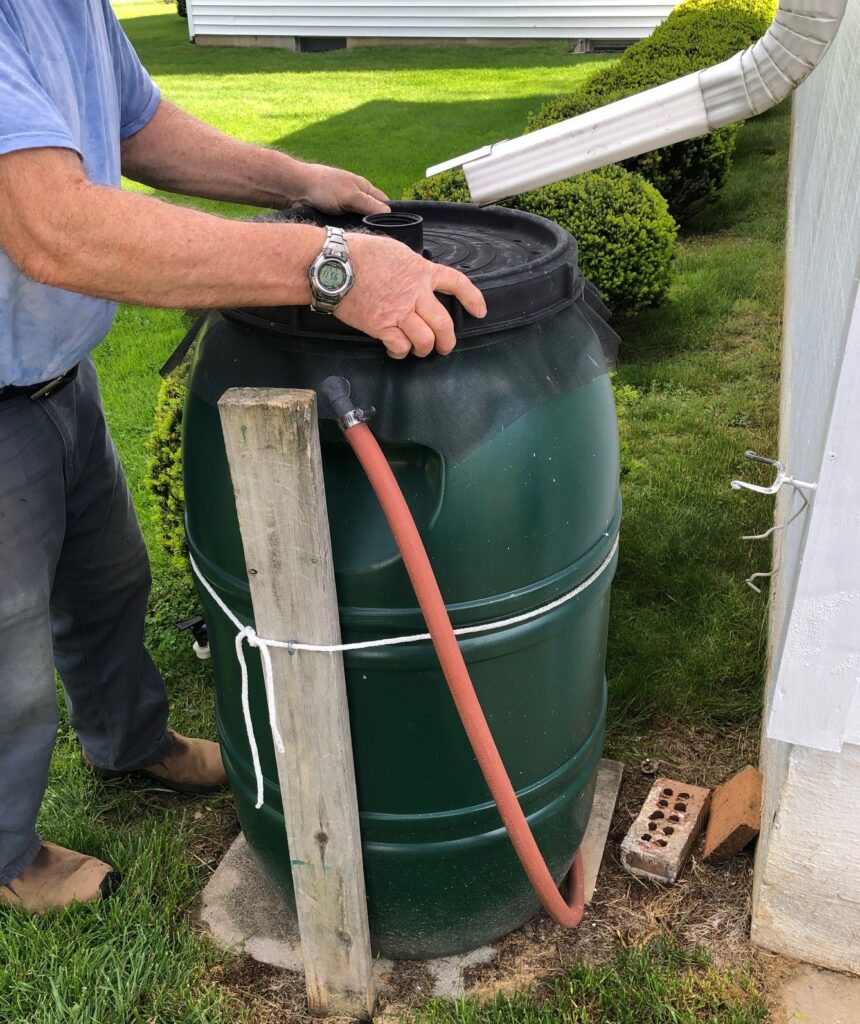
Bert picks up the motor and hoses and moves them to the other rain barrel to repeat the process.
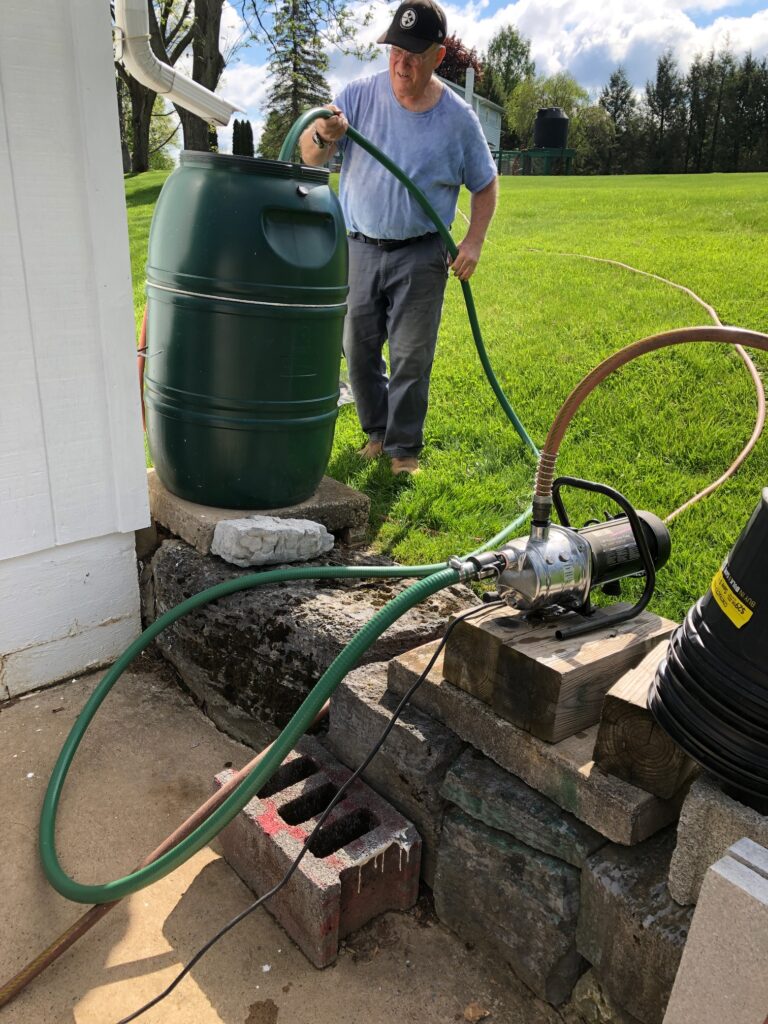
When he’s done with that, he goes up to the garden and removes the garden hose. The holding tank is now about 1/3 full (about 120 gallons). It holds about 360 gallons.
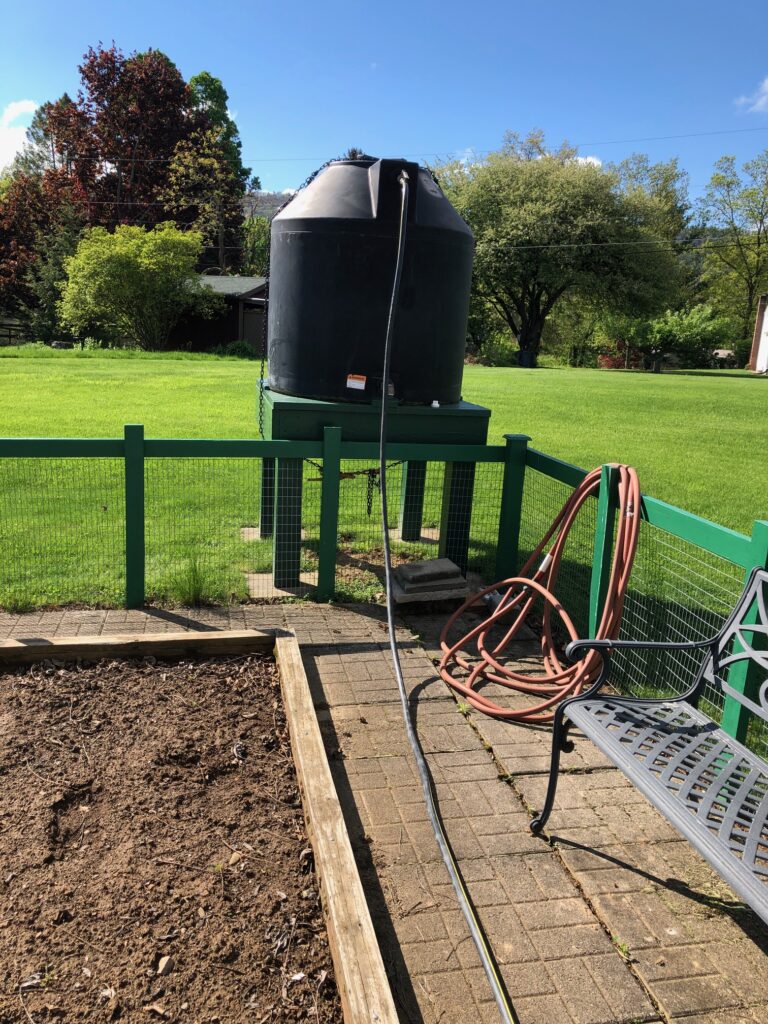
Whew! I learned a lot today. We should have a full tank by the time we transplant our seedlings.
Thanks for following this story. If you have any questions leave a comment or email me directly at marykisner@comcast.net. Enjoy!

